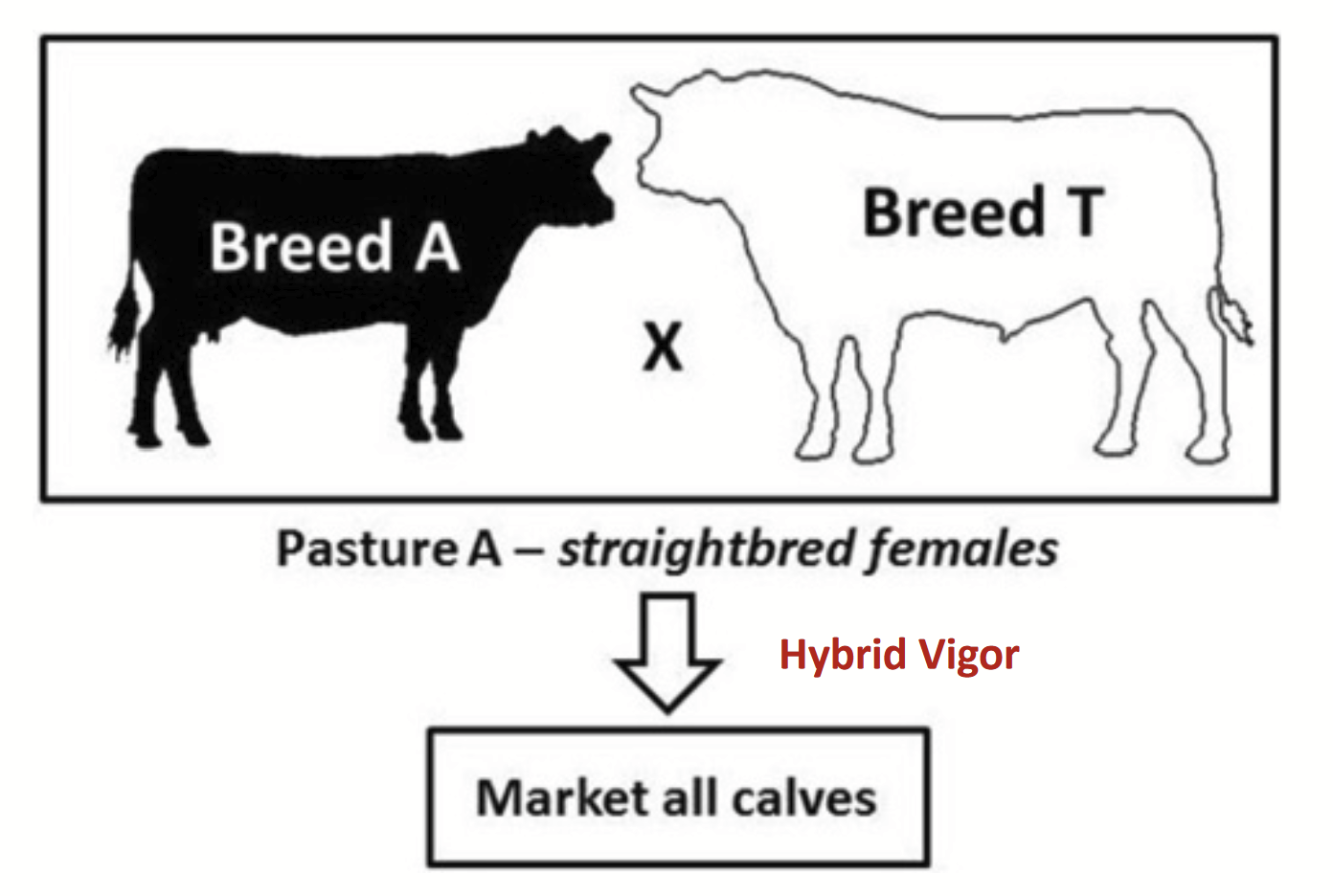AGR*2350: Beef, Sheep, and Goat Production
1/299
There's no tags or description
Looks like no tags are added yet.
Name | Mastery | Learn | Test | Matching | Spaced |
|---|
No study sessions yet.
300 Terms
livestock
Animals raised for the production of a human need (e.g. meat, milk, eggs, fibre, leather, draft/work).
Includes beef and dairy cattle, sheep, swine, goats, poultry, and more.
Largely from domestic animals.
Outside of North America: camels, ostrich/emus, water buffalo, etc.
domestication
Adaptation of the behaviour and traits of animals to suit the needs of humans.
Depigmentation is common in.
Livestock species: happened 6,000 to 12,000 years ago. Generally went from smaller species to larger species.
domestication of bison
Are we finished domesticating animals?
No → still have lots of wildtype behaviour such as charging. Will become more docile as a result of domestication.
domestication of rainbow trout
Are we finished domesticating animals?
A farm fish → currently breeding to do well in a farm environment.
domestication of crickets
Are we finished domesticating animals?
The new frontier of agriculture! Strains have evolved that do well in a managed environment.
domestication of sheep
Evidence of people wearing wool 10,000 BC.
Thought to be descended from moufflon in central Asia (Turkey, Syria, Iran).
One of the first domesticated species → small in size (easier to manage), provided multiple things (meat, milk, and clothing).
Moufflon (Ovis orientalis) → Neolithic domestic (9000-4000 BCE; became smaller in body and horns) → Domestic sheep from the iron age (1200-200 BCE; still small but meatier/heftier body shape, smaller horns, began to select for wool production) → Today’s domestic sheep (bigger body size, selected for white wool [ease of dyeing] and rapid growth rate, disappearance of horns)
![<p>Evidence of people wearing wool 10,000 BC.</p><p>Thought to be descended from <strong>moufflon</strong> in central Asia (Turkey, Syria, Iran).</p><p>One of the first domesticated species → small in size (easier to manage), provided multiple things (meat, milk, and clothing).</p><p><strong><mark data-color="red" style="background-color: red; color: inherit"><u>Moufflon (Ovis orientalis)</u></mark></strong><u> → </u><strong><mark data-color="yellow" style="background-color: yellow; color: inherit"><u>Neolithic domestic</u></mark></strong><mark data-color="yellow" style="background-color: yellow; color: inherit"> (9000-4000 BCE; became smaller in body and horns)</mark> →<strong> <mark data-color="green" style="background-color: green; color: inherit"><u>Domestic sheep from the iron age</u></mark></strong><mark data-color="green" style="background-color: green; color: inherit"> (1200-200 BCE; still small but meatier/heftier body shape, smaller horns, began to select for wool production)</mark> → <strong><mark data-color="blue" style="background-color: blue; color: inherit"><u>Today’s domestic sheep</u></mark></strong><mark data-color="blue" style="background-color: blue; color: inherit"> (bigger body size, selected for white wool [ease of dyeing] and rapid growth rate, disappearance of horns)</mark></p>](https://knowt-user-attachments.s3.amazonaws.com/b221146d-3244-47c4-ae7d-1a639a3055ca.png)
domestication of cattle
Thought to be descended from aurouchs → very large, big horns, dark colour with white stripe along back very strong necks, now extinct. Origin: Northern India, Pakistan, potentially China.
Currently two groups that both originated from aurochs:
Taurine (Bos taurus): 10,500 years ago, typically what we see in Canada. Originated around Syria/Iraq/Iran.
Indicine (Bos indicus): zebu humped 8,500 years ago, more tropically adapted. Originated around India/Pakistan.
Aurochs (Bos primigenius) (very large, dark brown/black pigment) → Neolithical domestic cattle (a little smaller so easier to manage, smaller horns) → Domestic cattle from the iron age (change in hide colour → white, spotted, etc., smaller body size again, smaller horns) → Today’s domestic cattle (much bigger [now able to manage with today’s technology], selected for growth and performance, less horns [some still selected for horns], more meat and food product)
![<p>Thought to be descended from <strong>aurouchs</strong> → very large, big horns, dark colour with white stripe along back very strong necks, now extinct. Origin: Northern India, Pakistan, potentially China.</p><p>Currently two groups that both originated from aurochs:</p><ol><li><p><strong>Taurine</strong> (Bos taurus): 10,500 years ago, typically what we see in Canada. Originated around Syria/Iraq/Iran.</p></li><li><p><strong>Indicine</strong> (Bos indicus): zebu humped 8,500 years ago, more tropically adapted. Originated around India/Pakistan.</p></li></ol><p><strong><mark data-color="red" style="background-color: red; color: inherit">Aurochs (Bos primigenius)</mark></strong><mark data-color="red" style="background-color: red; color: inherit"> (very large, dark brown/black pigment)</mark> → <strong><mark data-color="yellow" style="background-color: yellow; color: inherit">Neolithical domestic cattle</mark></strong><mark data-color="yellow" style="background-color: yellow; color: inherit"> (a little smaller so easier to manage, smaller horns)</mark> → <strong><mark data-color="green" style="background-color: green; color: inherit">Domestic cattle from the iron age</mark></strong><mark data-color="green" style="background-color: green; color: inherit"> (change in hide colour → white, spotted, etc., smaller body size again, smaller horns)</mark> → <strong><mark data-color="blue" style="background-color: blue; color: inherit">Today’s domestic cattle</mark></strong><mark data-color="blue" style="background-color: blue; color: inherit"> (much bigger [now able to manage with today’s technology], selected for growth and performance, less horns [some still selected for horns], more meat and food product)</mark></p>](https://knowt-user-attachments.s3.amazonaws.com/d9d89f1c-322c-451d-bff6-536baacf8b78.png)
domestication of pigs
Domesticated from wild boars approximately 10,000 years ago (a little bit after cattle). Believed to be from Turkey and the Middle East (like Taurine cattle).
Wild boar: forest dwelling, tuber eaters. As humans started to cut down forests for land (deforestation), wild boars were driven out - potentially how they became domesticated!
Wild boar (Sus srofa) (black/dark brown coat) → Neolithic domestic pig (smaller size, easy management) → Domestic pig from the iron age (lighter hair colour), less heavy in head area, smaller, bristly hair → Today’s domestic pig (less hairy, selected for rapid growth rate, lighter colour hide and fur)
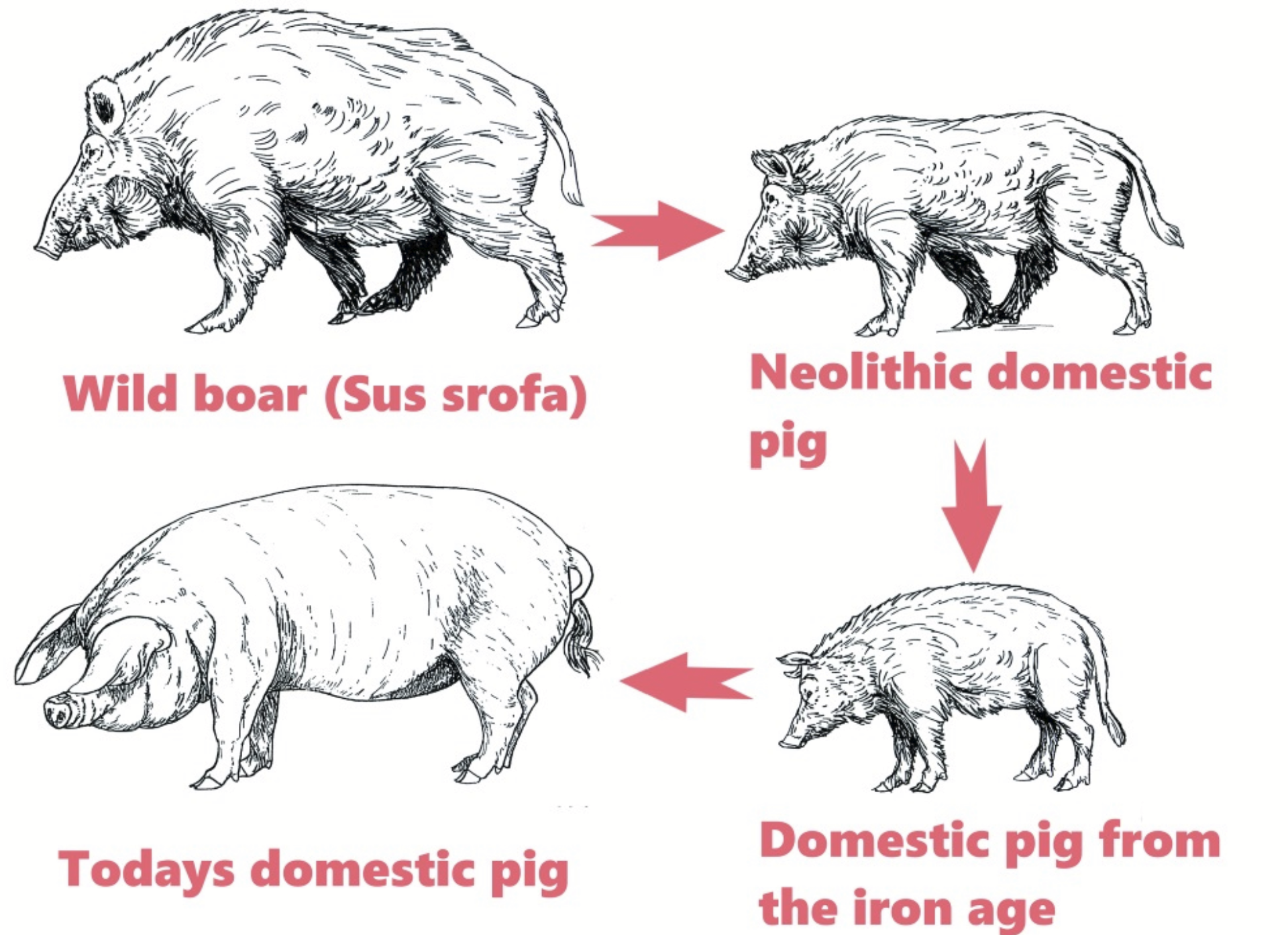
domestication of chickens
Much less is known about this process. Occurred around 6,000 years ago in Southeast Asia bamboo forests.
Originated from Gallus gallus, the Red Junglefowl, as their reproduction is highly responsive to nutrition (more feed, more eggs).
Moved around with trade routes!
domestication of horses
Originated in Eurasia about 3,000 BC. First hunted for meat, then herded. They are larger and faster animals, so harder time capturing → later domestication.
Used as draft animals, then riding to keep track of flocks/herds. Important for developing Agrarian society as they are quieter and get along well with humans, so we can use their strength and speed!
domesticated animals
Must have a trait of interest/value.
Depend on humans for survival (codependent).
Behaviours are changed with domestication.
Humans have control over their breeding/reproduction.
selective breeding
Nonrandom mating → identifying traits of interest, and breeding animals to emphasize that trait.
Most of time, we are selecting for performance aspects such as milk production or muscling.
Often, domesticated animals have traits rarely seen in the while (e.g. white colouring, floppy ears, lack of horns).
Depigmentation is potential byproduct of narrowing the gene pool (more easily affected because controlled by less genetic factors?).
food production
Reasons for domestication of animals
Humans evolved to eat animal products → meat, fish, milk, eggs, honey.
Palatability: humans prefer the taste and texture.
Protein: amino acids closely match human requirements.
Other micro-nutrients: vitamin B12, iron, etc. are most easily absorbed this way.
Contributes 16% of calories and 37% of protein to the world food supply!
Closely tied to economic status → “developed countries” have higher animal product consumption than “developing”.
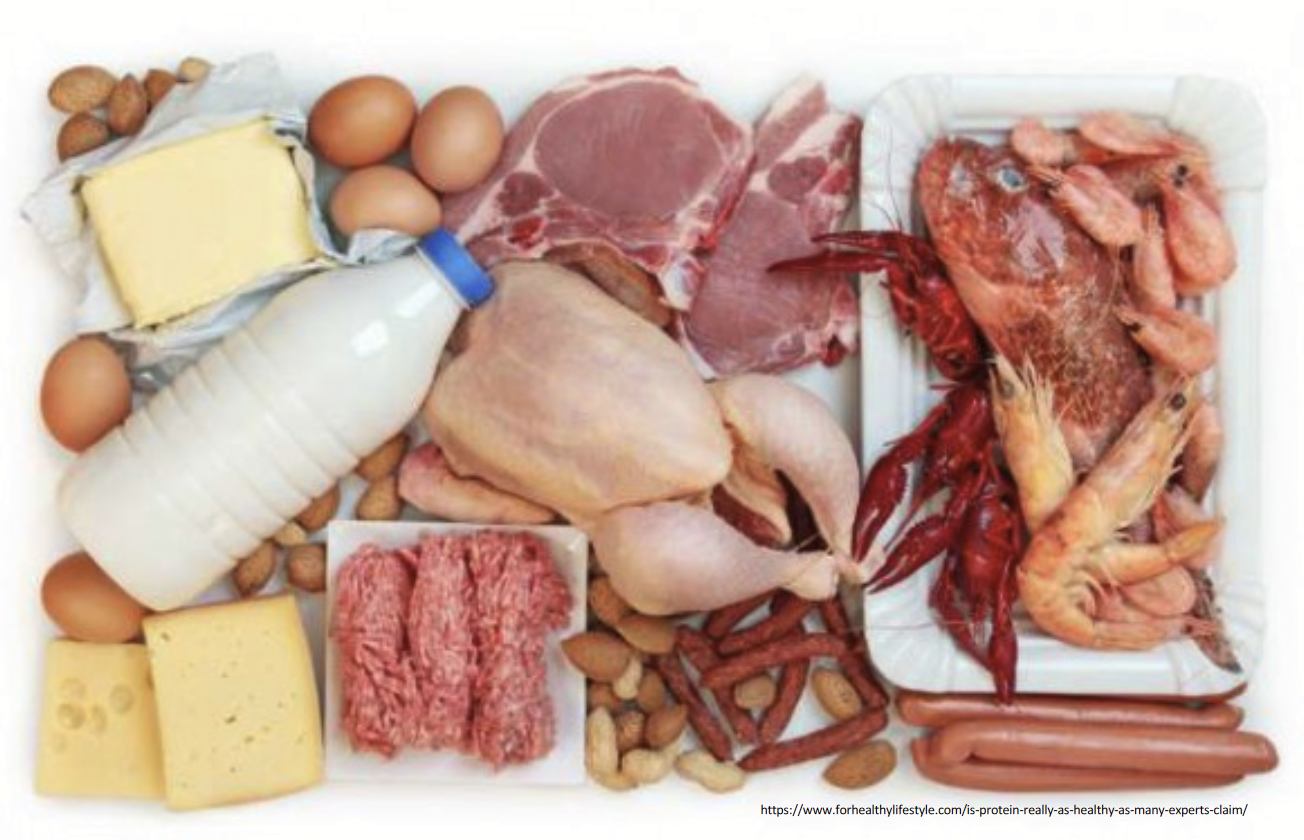
clothing
Reasons for domestication of animals
Wool, leather, fibre (current decrease in popularity due to synthetic and vegetable fibres), feathers (down - more of a byproduct now).
Historically vital to cover bodies to work in intense conditions.
other non-food products
Reasons for domestication of animals
Insulin, heparin, thrombin: able to be extracted from animal sources; now, it is engineered from microbial cloning.
Rennet: set of enzymes produced in the stomach of a calf that causes milk to curdle (used for cheese).
Industrial products: e.g. lanolin, gelatin, collagen.
Meat and blood meals: e.g. meat meal for fertilizer.
Research: e.g. human medicine (pig heart valves).
power
Reasons for domestication of animals
DRAFT: important to “developing countries” as they may not be able to afford machinery. A variety of species are used!
TRANSPORTATION: historically important, now we are not as reliant. In past, animals gave us access to longer trade routes and access to difficult terrain.
land management
Reasons for domestication of animals
Use of low productive lands: pasture and range, hilly terrain. Some areas are not suitable for plant production but can still be used for livestock!
Globally 2/3 of total arable land (land usable for humans) is in pasture/range: however, 60% is not suitable for cultivated crops.
Manure: undervalued globally! Low cost nutrient source, provides nutrients and organic matter (N, P, and K are good fertilizers, provide lots of minerals and organic matter; values at over $1 billion USD). Can also be used as a fuel!
Conservation: livestock plays vital role in environmental goods and services (lots of growth), carbon sequestration (eat grass, poop into ground, carbon from grass goes deep into ground and reduces carbon levels), and regenerative agriculture (reintroduce livestock to their native environment, allowing the land to regenerate itself).
environmental conservation through agriculture
Urban Grazing: Calgary Pilot Project → herd of goats eliminating weeds in parklands/grasslands
Ducks Unlimited Pasture Projects → groups of producers partnering with traditional environment groups who pay farmers to keep habitat suitable for breeding ducks
Shady Creek Lamb Co. → grazing lambs and sheep to maintain solar panel efficiency (stop grass from growing into them)
recreation/sport
Reasons for domestication of animals
Religious/non-secular, racing, rodeos, breeding shows, companionship.
economic benefits of livestock
Adding value to a commodity crop → make more selling a pig than selling corn to feed a pig.
Outlet for crops not fit for human consumption → forages, off-grade grains, feed and food by-products.
value-chain/supply-chain
Every step in the production of the good/product. From the primary producer to the consumer!
E.g. bottom = calves → feedlot → processor → consumer.
stakeholder
Every person or group who has an interest in a segment of the industry.
e.g. vet, policy person, primary producer
commodity products
Generic products of agriculture, often traded on futures market. Changes when value is added!
e.g. beef, pork
value-added
Adding “features” to commodity products. Can increase the price and appeal to customers. Adds economic value!
Involves management, quality, or nutritional traits, oftentimes is producer managed or up to the producer’s decisions.
e.g. grass-fed vs grain-fed, branded products
producer goals
Different producers have different goals and different focuses! Goals are variable and diverse!
Production based:
Food production: meat, milk, and eggs (fastest growth with least input), safe food, quality and quality (volume vs prime grade).
Fibre: wool and fur quality and quantity.
Animal performance: e.g. speed for race horses.
Often economically based: production efficiency - OPTIMIZE, NOT MAXIMIZE.
Other goals:
Health and longevity: want animals to be functional and productive for as long as possible; want them to have a longer lifespan compared to fastest growth.
Environmental: e.g. regenerative agriculture.
Social: social license - values and morals behind food production, welfare verified.
food production
Producer goal, production-based:
Meat, milk, and eggs (fastest growth with least input)
Safe food
Quality and quality (volume vs prime grade).
fibre
Producer goal, production-based:
Wool and fur quality and quantity
animal performance
Producer goal, production-based:
e.g. speed for race horses.
production efficiency
Producer goal, production-based:
Economically based
OPTIMIZE, NOT MAXIMIZE
What are producers being paid for?
health and longevity
Producer goal, “other”:
Want animals to be functional and productive for as long as possible.
Want them to have a longer lifespan compared to fastest growth.
environmental
Producer goal, “other”:
e.g. regenerative agriculture.
social
Producer goal, “other”:
Social license - values and morals behind food production, welfare verified.
growth
Measuring body weight (BW) - it is what producers are paid for in meat producing animals. Performance often measured in gain/time.
When animals are young: tends to be linear
When older (puberty and maturation): plateaus
Body Weight (BW)
What producers are paid for in meat producing animals.
Monitoring and tracking growth is VERY IMPORTANT!
Methods to track: Weight scales, automatic scales.
Average Daily Gain (ADG)
Performance measured in gain/time (often kg/day).
allometric growth
Growth in which not all aspects grow at the same rate or at the same time.
“Growth ratios” → breed and “type” differences.
As animal matures: reduction in head size, decrease in limb size relative to body.
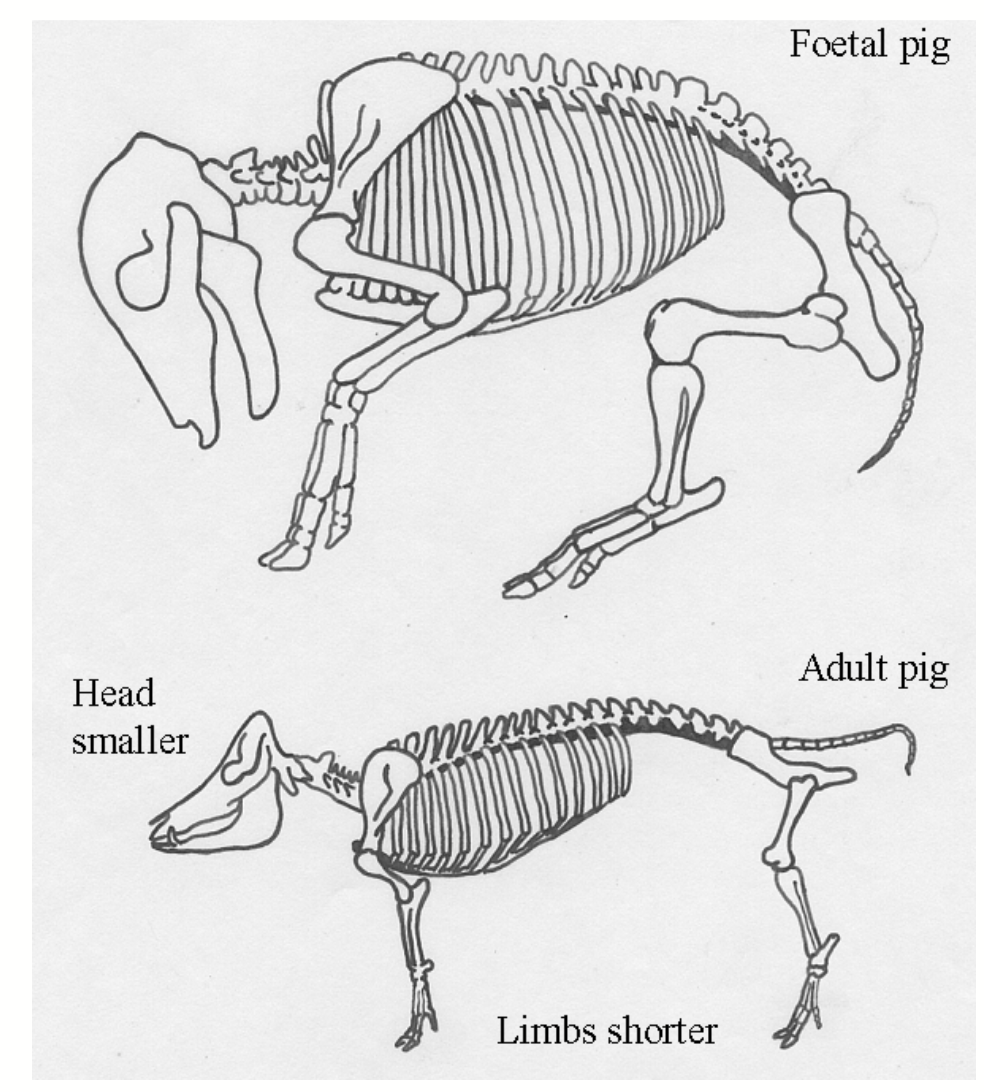
isometric growth
Growth with no change in shape. Proportional. For mammals, more common after puberty and/or maturity. Most common in fish!
composition of gain
Proportion of where gain happens varies and changes. Not even for tissue components in the body! More body composition from from fat in later age.
How we grade beef (beef grading)!
How animals deposit different tissue types can differ across breeds; plays into breeder goals - what do they want to select for?
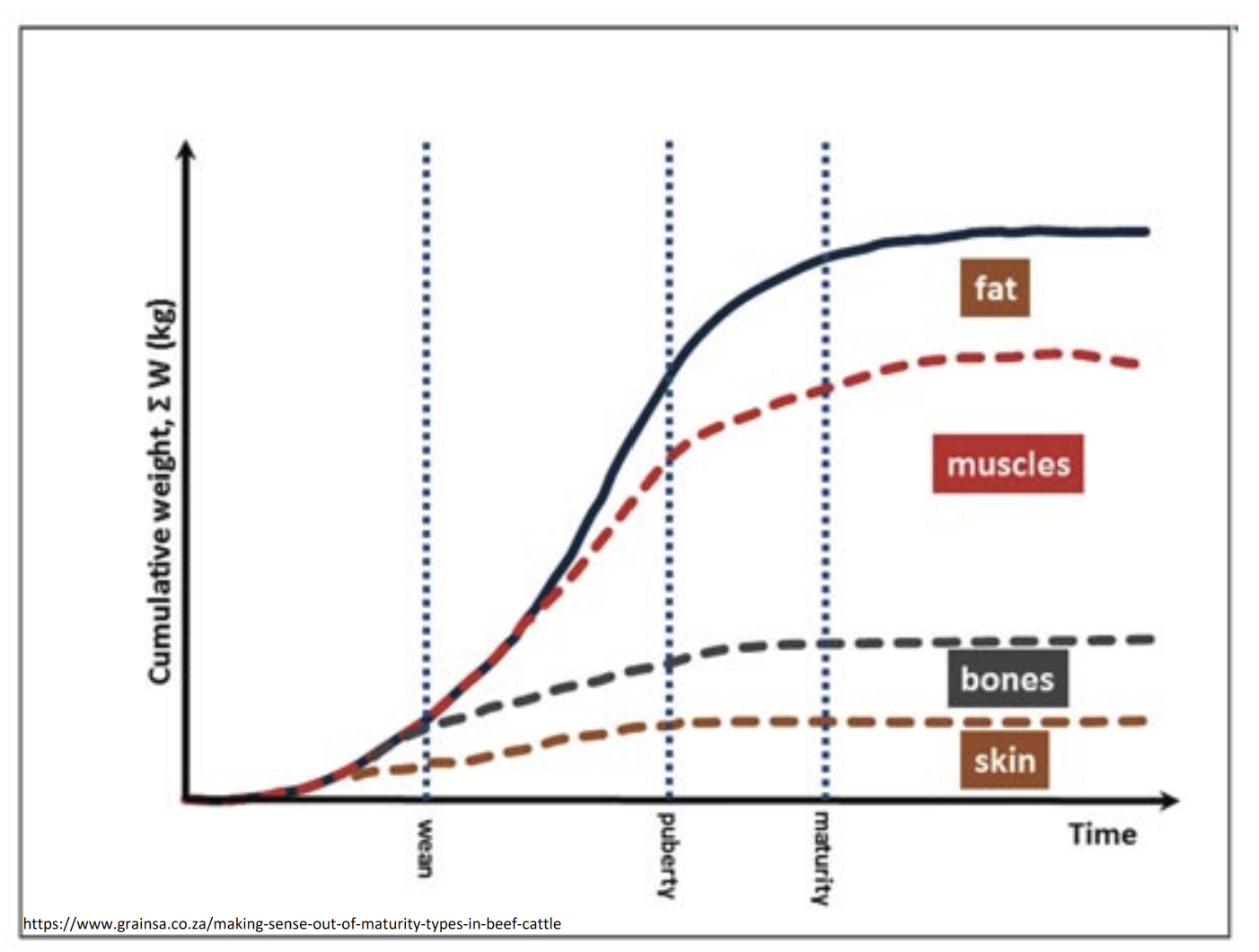
physiological state
How we tend to manage animals. Allows us to closely meet the animal’s needs/requirements as they change in body function.
Age → changes in metabolism as animal ages; pregnancy trimesters require different management
Pre-weaning vs post-weaning vs adult
production efficiency
Feed is #1 cost in livestock systems
Feed Conversion Ratio → WANT TO OPTIMIZE RELATIVE TO INPUTS
Feed Conversation Ratio (FCR)
Feed:Gain (F:G)
Lower number of feed:gain is better
e.g. 5.4:1 = 5.4 kg of feed to make 1 kg of BW gain
Gain:Feed (G:F)
High number is better
e.g. 0.33:1 = 0.33 kg of BW gained for every 1 kg of feed consumed
feed industry in Canada
$4 billion total revenue per year.
Livestock and poultry feed industry produced ~30 million tonnes annually: 20 million in feed mills and 10 million on farm (2/3 in commercial mills).
~500 commercial feed mills in Canada (22% in the west, more on farm; 30% in ON and 36% in QC, where they are more specific mills).
regulatory for the feed industry
Governed by the CFIA.
Animal Feeds Act
Health of Animals Regulations
Food and Drug Regulations
Canadian Food Inspection Agency
Regulatory - what the feed industry is governed by.
Animal Feeds Act
Registration of feeds
Product standards and guaranteed analysis
Packaging and labeling
Sampling, analysis, and enforcement
The Feed Tag
Governed by the CFIA. Includes:
Commercial Name
Description
Guaranteed Analysis
Ingredients
Directions
Warnings
Cautions
Manufactured by:
Manufactured date and lot number
Net Weight
water
Type of Nutrient
Makes up 80% of the blood
Regulates body temperature
Vital for organ functions such as digestion, waste removal and the absorption of nutrients
carbohydrates
Type of Nutrient
Simple
Complex
lipids
Type of Nutrient
Fats and Oils
proteins
Type of Nutrient
Amino Acids
Non-protein N
minerals
Type of Nutrient
Macro: Ca, Cl, Mg, P, K, Na, S → g/day
Micro: Cu, Zn, Fe, Mn, Se, Mo, Cr, Co, I, etc. → mg/day or ppm/day
vitamins
Type of Nutrient
Fat soluble: A, D, E, K
Water soluble: B complex, C
These facilitate every metabolism pathway!
Type 1: Dry Roughages
8 categories in International Feed Identification System (IFN)
Greater than 18% crude fibre (complex carbs).
Hay: legumes (alfalfa, clover, etc.), grass, L/G blends → high in protein!
Straw and chaff (crop residue/leftover)
Stovers (e.g. corn residue, leaves/stalks of crops, common for beef cattle in late fall)
Others: byproducts of human crop production such as corn cobs
hay cuts
First cut hay: thicker stems, highest in fibre.
Second cut hay: softer, greener, higher protein but lower fibre, mostly leaves.
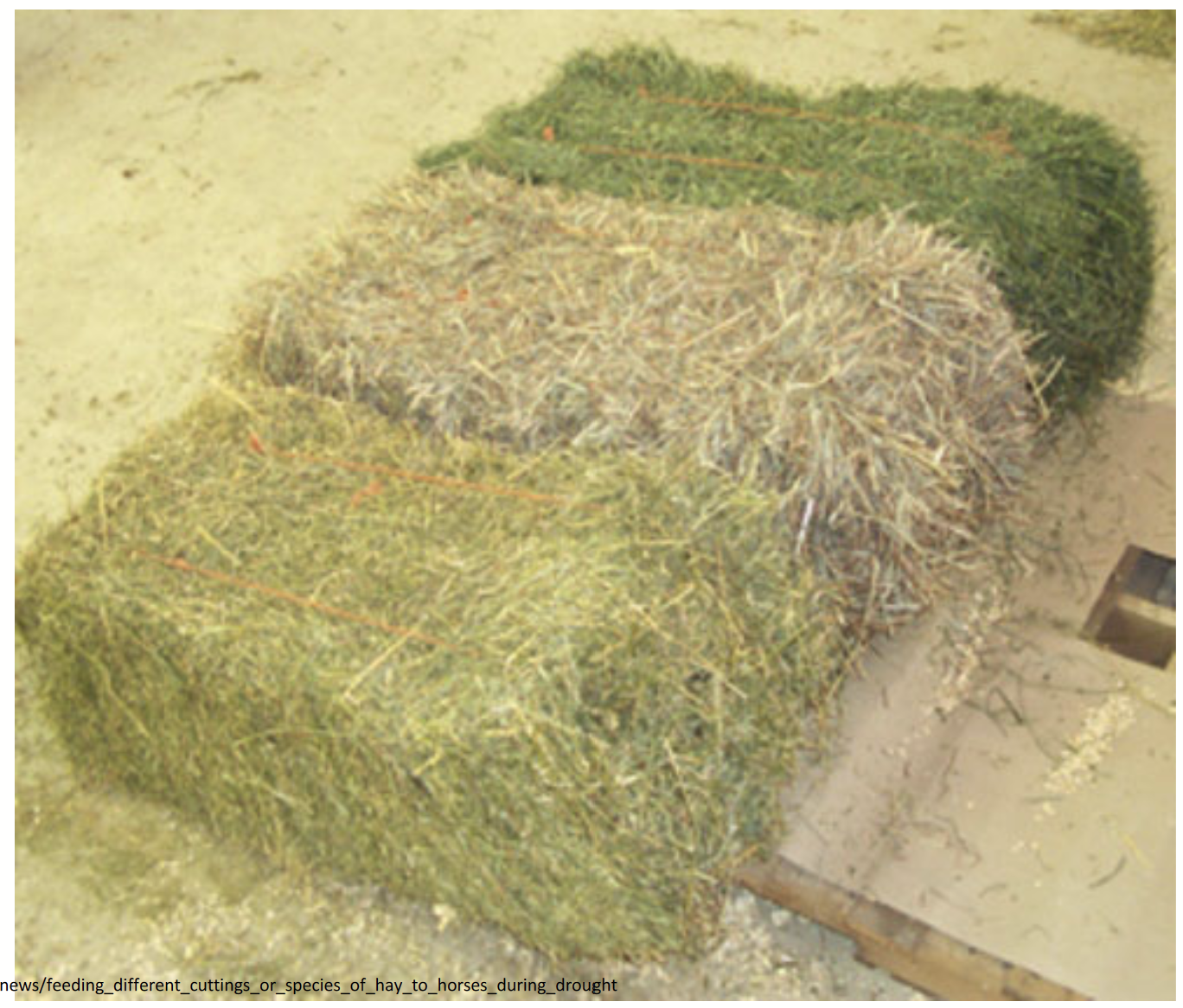
Type 2: Pasture and Range Grasses
8 categories in International Feed Identification System (IFN)
Grazed plants
Dormant (may be in vegetative phase)
Growing
Green feed: not preserved, fed directly to animals (common in dairy cows)
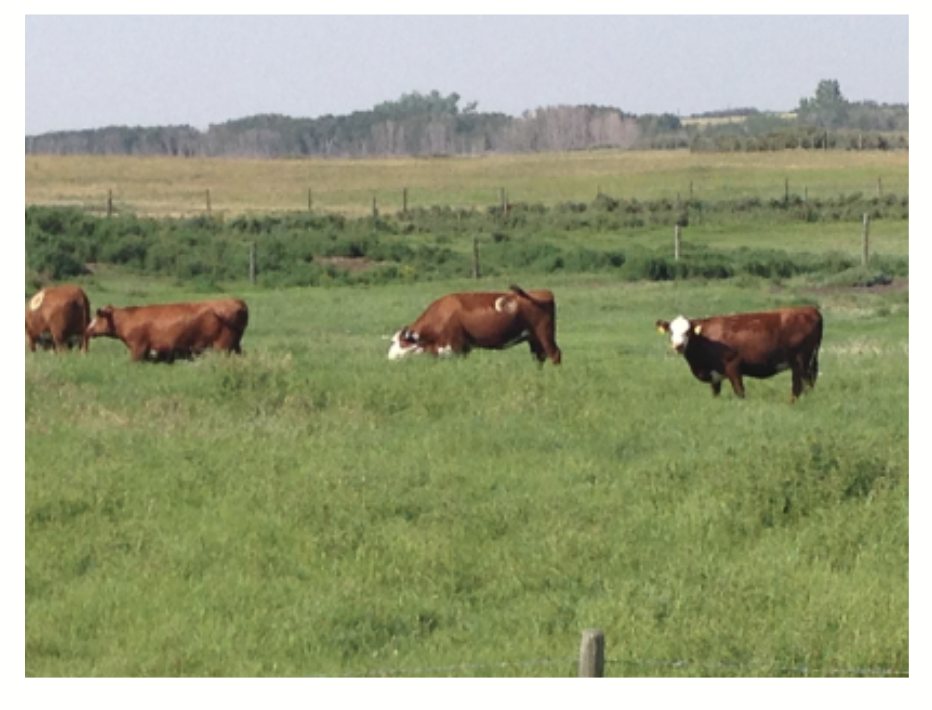
Type 3: Ensiled Roughages
8 categories in International Feed Identification System (IFN)
Want anaerobic fermentation for production of volatile fatty acids! Aerobic fermentation results in rotting and decomposition.
Corn Silage: common!
Haylage
Legume, grass, L/G blends
“Baleage”: actually haylage, wrap bales in plastic and allows fermentation in the bale itself
Others: pea and oat mixes fermented
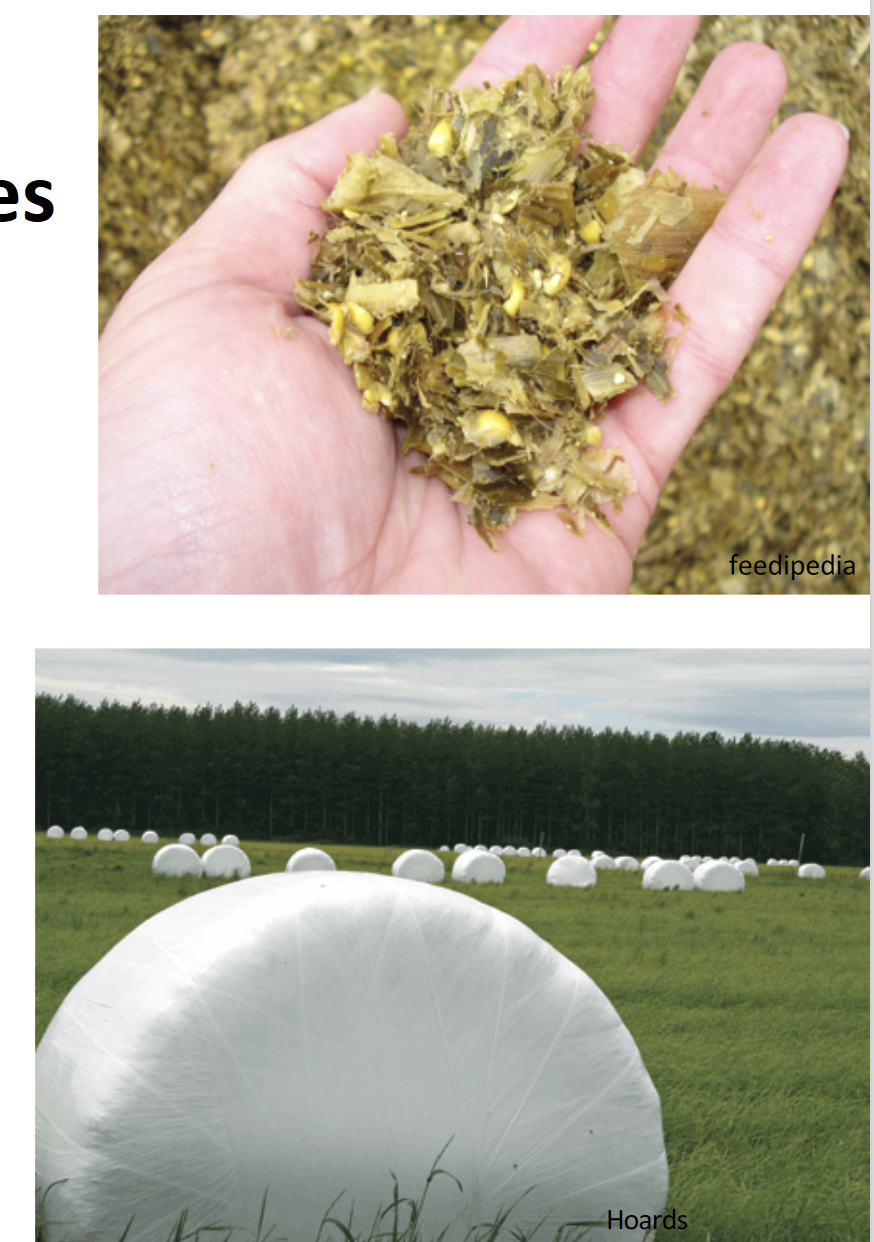
Type 4: High Energy Concentrates
8 categories in International Feed Identification System (IFN)
Less than 18% crude fibre and greater than 70% total digestible nutrients (TDN; measure of energy), but less than 20% crude protein (CP).
Cereal grains
Milling by-products of cereal grains
Beet pulp (byproduct of sugar beets)
Molasses (refining process in sugar)
Screenings
Tallow and other fats
Many others
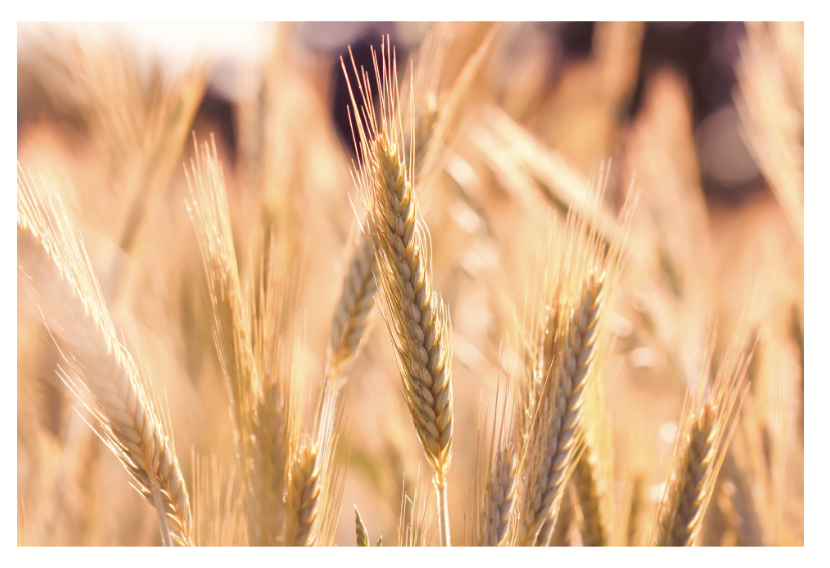
total digestible nutrients (TDN)
Measure of energy used for feeds.
Type 5: Protein Sources
8 categories in International Feed Identification System (IFN)
Containing greater than 20% crude protein (CP).
Legume seeds (particularly if legumes have been processed)
Dehydrated alfalfa (pellets)
Urea, biuret, ammonia
Co-products
Soybean meal (VERY GOOD SOURCE OF PROTEIN)
Canola meal (common in Western CA)
Distillers and brewers grains
Milk co-products (whey isolate)
Animal meals (dog/cat food)
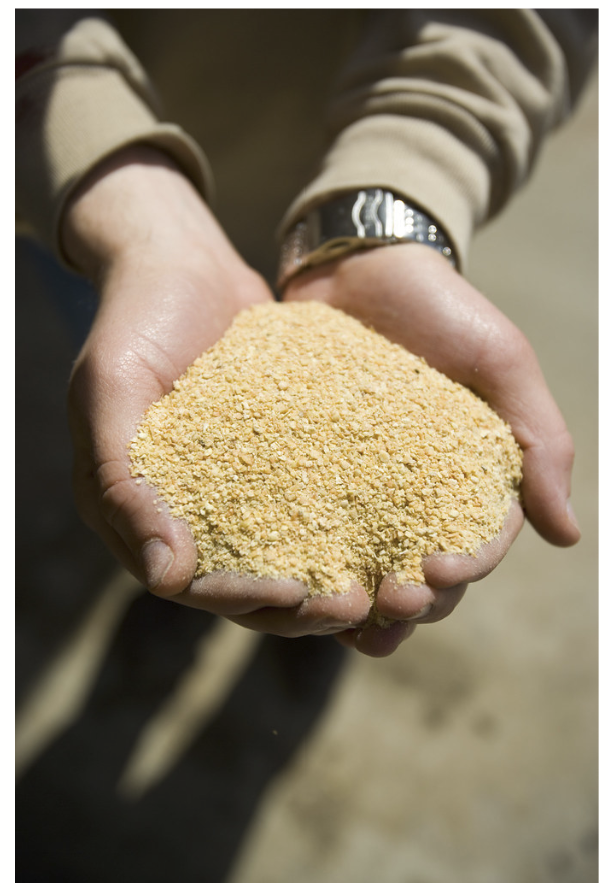
Crude Protein (CP)
Measure of protein in feeds.
Type 6: Minerals
8 categories in International Feed Identification System (IFN)
Granular minerals
Type 7: Vitamins
8 categories in International Feed Identification System (IFN)
Dry or oil-based (sprayed on)
Type 8: Additives
8 categories in International Feed Identification System (IFN)
Non-nutritive additives.
Antibiotics
Buffers
Enzymes (to help digest fibre)
Probiotics
Hormones
Medicines
Colours and Flavours
8 categories in International Feed Identification System (IFN)
Dry Roughages
Pasture and Range Grasses
Ensiled Roughages
High Energy Concentrates
Protein Sources
Minerals
Vitamins
Additives
feed processing
Increase feed digestibility
Improve content of other nutrients besides energy (e.g. heat up food to eliminate inhibitor of protein processor)
Change particle size, increase feed intake, increase rate of intake
Allow for mixtures of feeds at a uniform particle size (livestock will often sort everything!)
Improve storage characteristics (oxidation of fats, destruction of vitamins)
Facilitate other forms of processing
Milling (grinding grain) prior to pelleting
Destroy toxins, weed seeds, and pathogens
Salmonella: unheated food can be a vector between facilities
Mycotoxins: toxins; byproducts from different fungal species, can be very toxic!
This adds costs and can change the chemical and physical characteristics of feeds!
types of feed processing
Chopping, ensiling, ammoniation/chemical treatment, milling, rolling, steaming and flaking, mixing, pelleting, tempering, toasting/roasting, drying, wafering, more!
This adds costs and can change the chemical and physical characteristics of feeds!
milling
Most common type of feed processing.
“Cold” feed processing → no heat involved.
Breaks down whole grains into smaller particples.
Limited chemical changes, rather, changes in surface area.
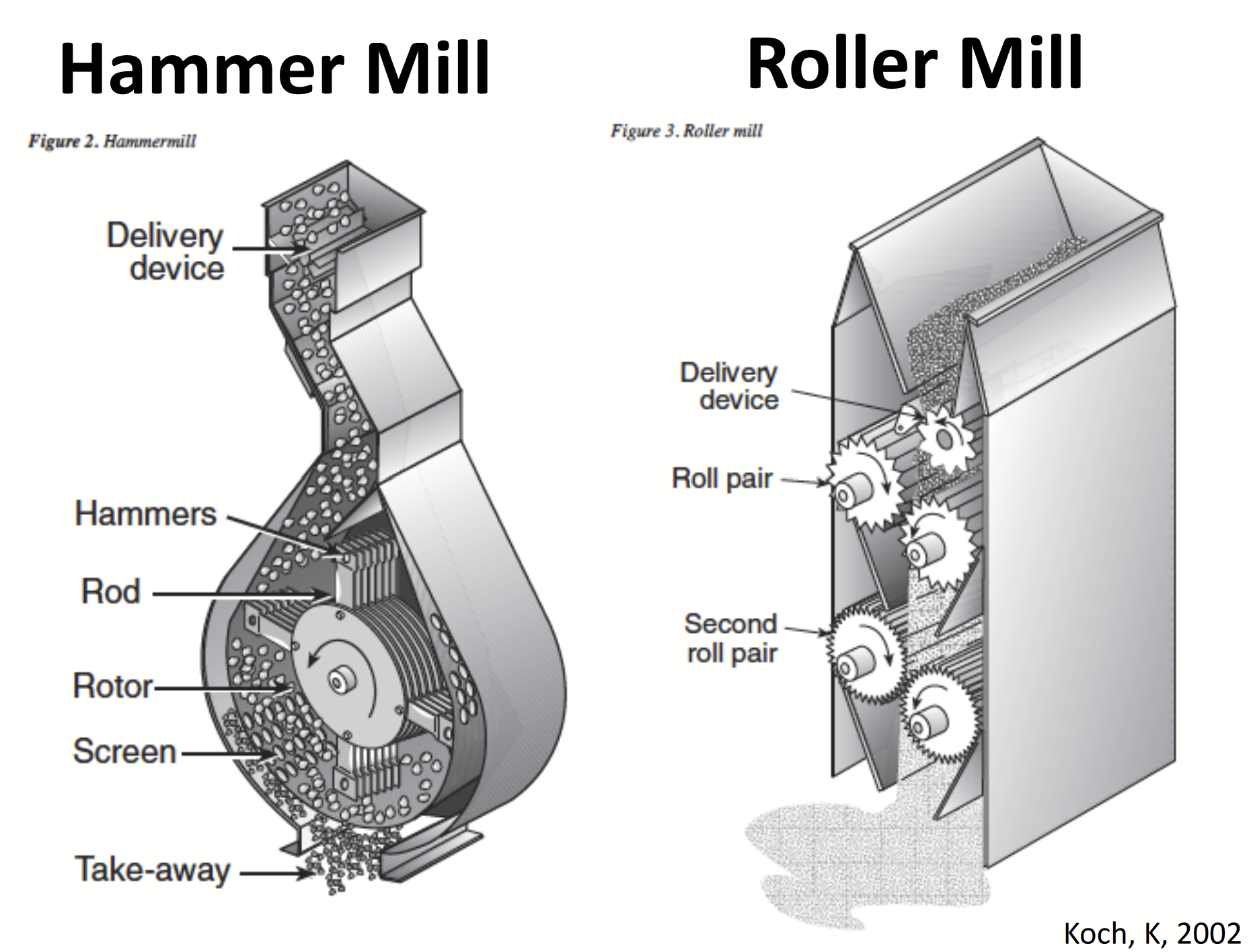
mixing
Type of feed processing.
Ranges from large, medium, and small. Can have hand adds (e.g. medicine).
Quality control: electronic tracking, HACCP (Hazard Analysis Critical Control Points).
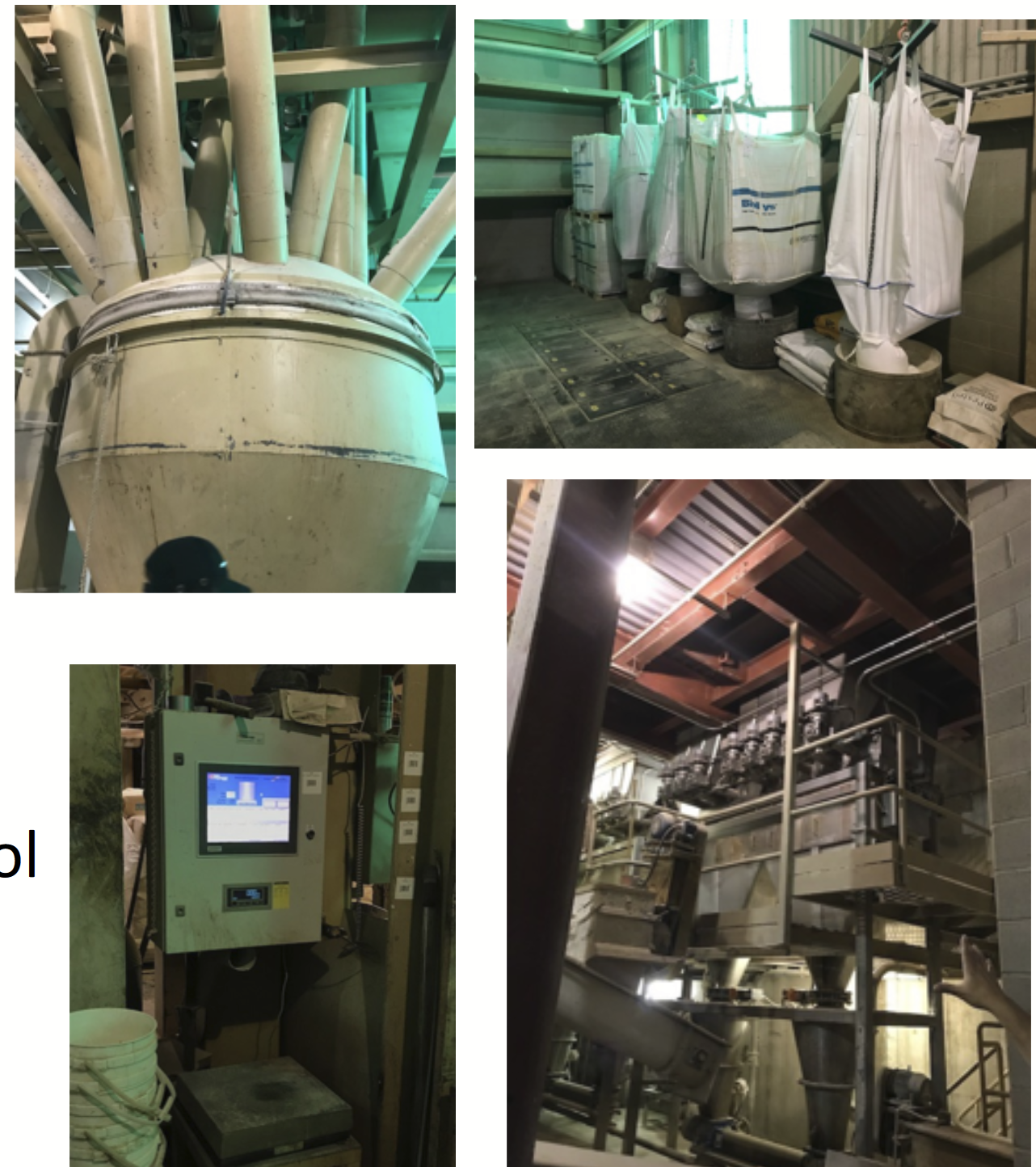
pelleting
Used to create pellets.
Quality matters → avoid fines → animals can sort and not eat it, fines can break down too quickly and lead to gastrointestinal issues.
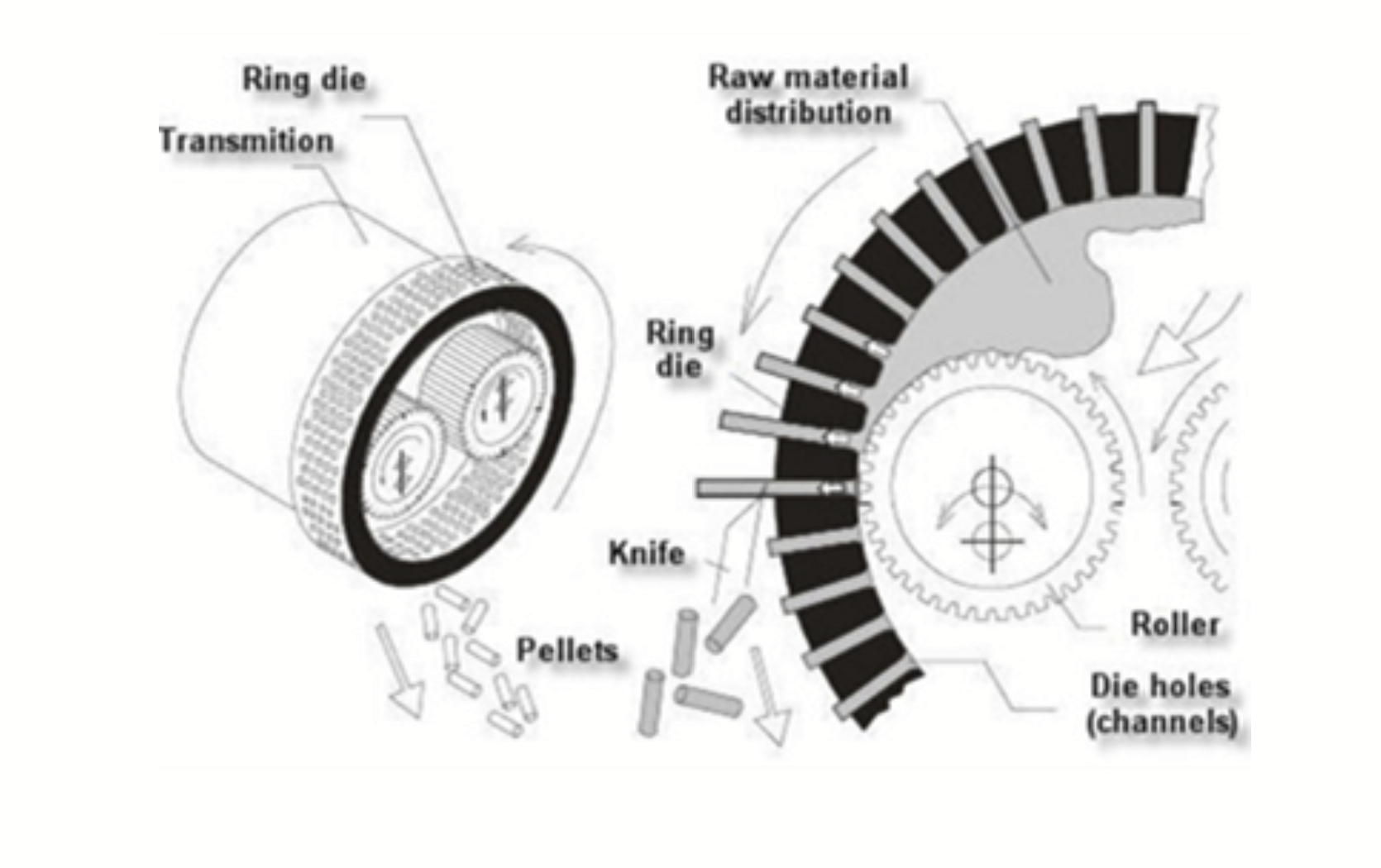
steam flaking
Type of feed processing,
Increases digestibility through heat and steam.
Kills weed seeds.
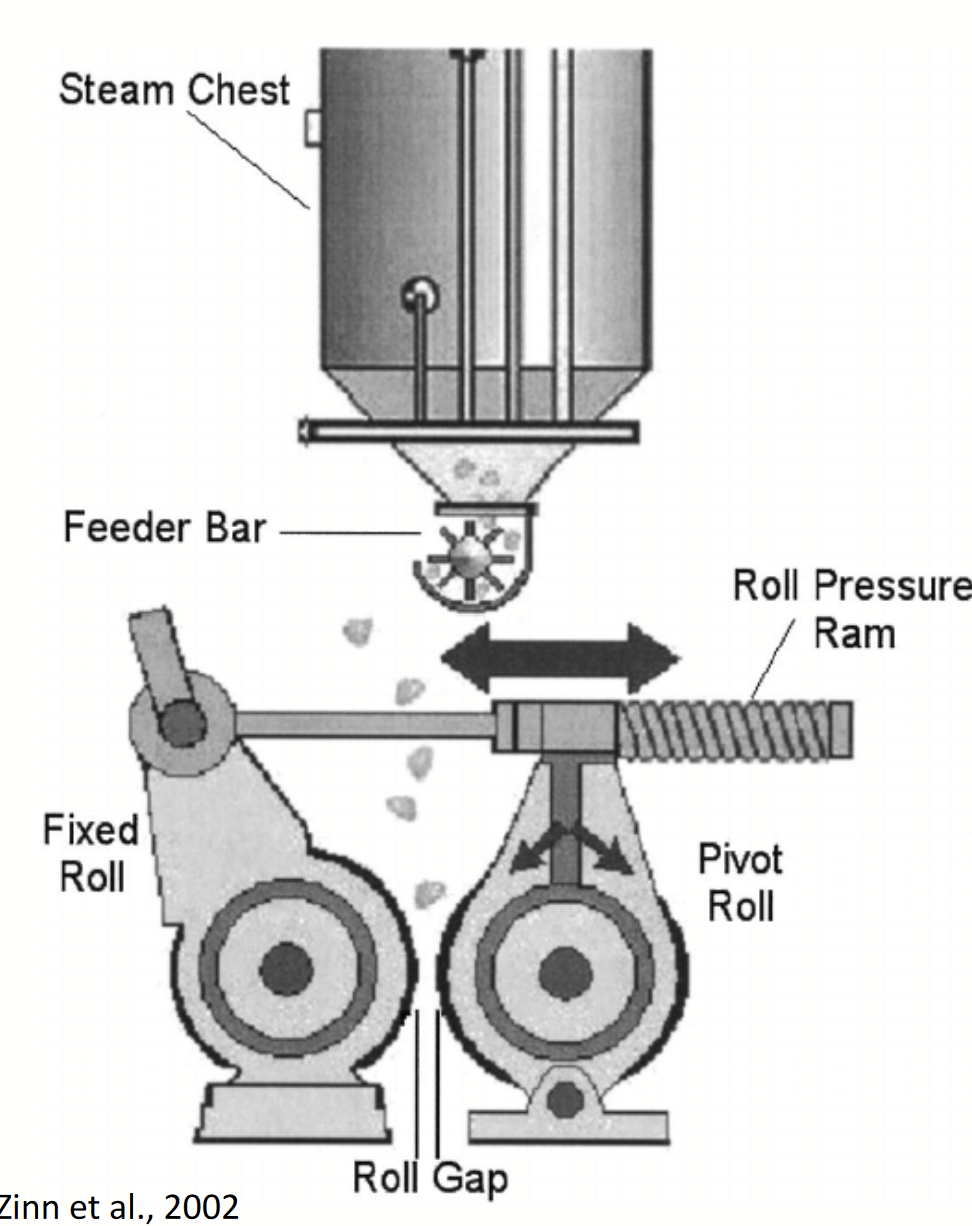
steel cut oats
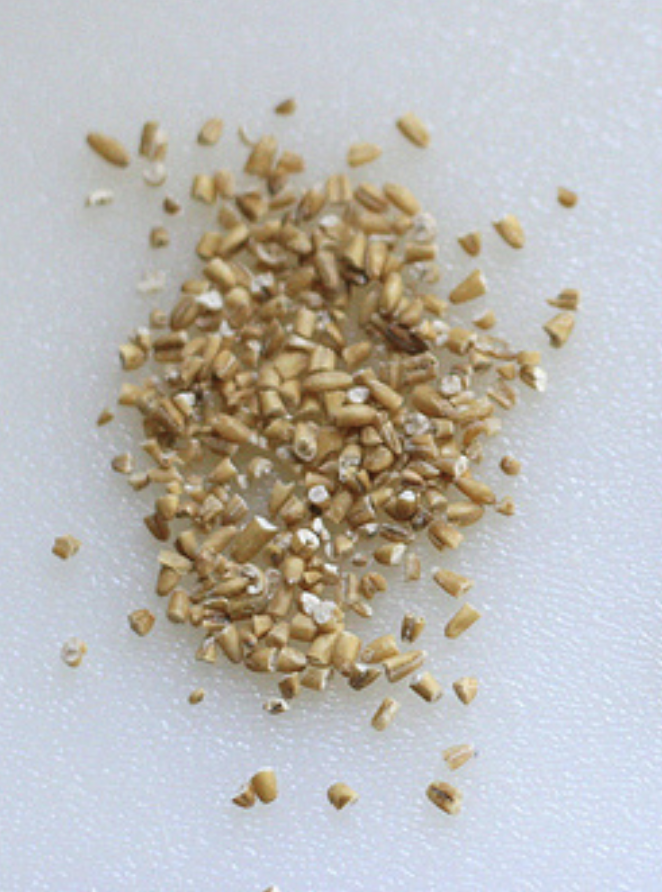
flaked oats
Increased surface area for microbes to ferment!
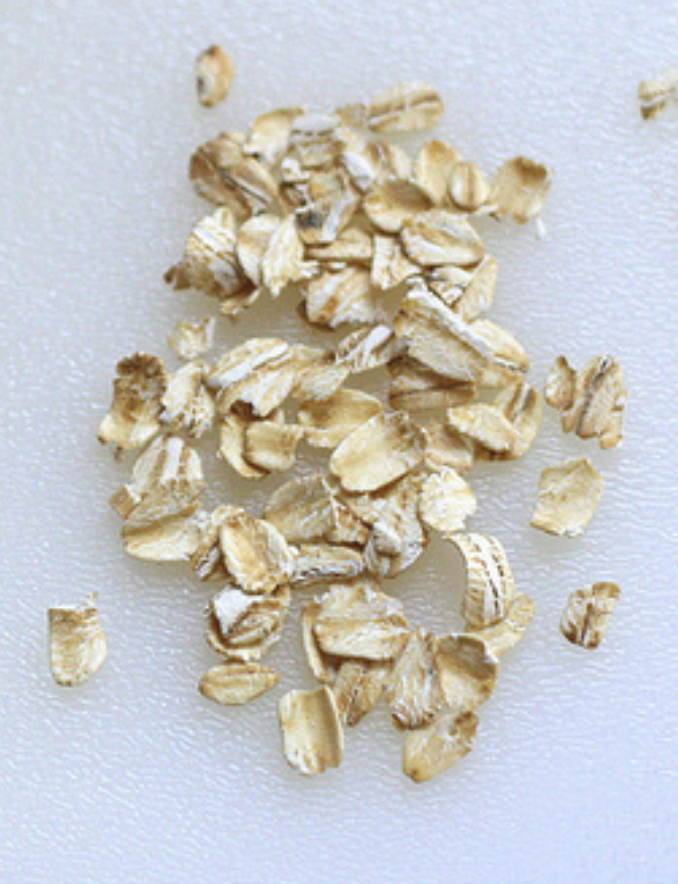
extrusion
Type of feed processing.
Heat and steam added, mash pushed out a die at extremely high pressure.
Most commonly seen in pet food and aquaculture feeds.
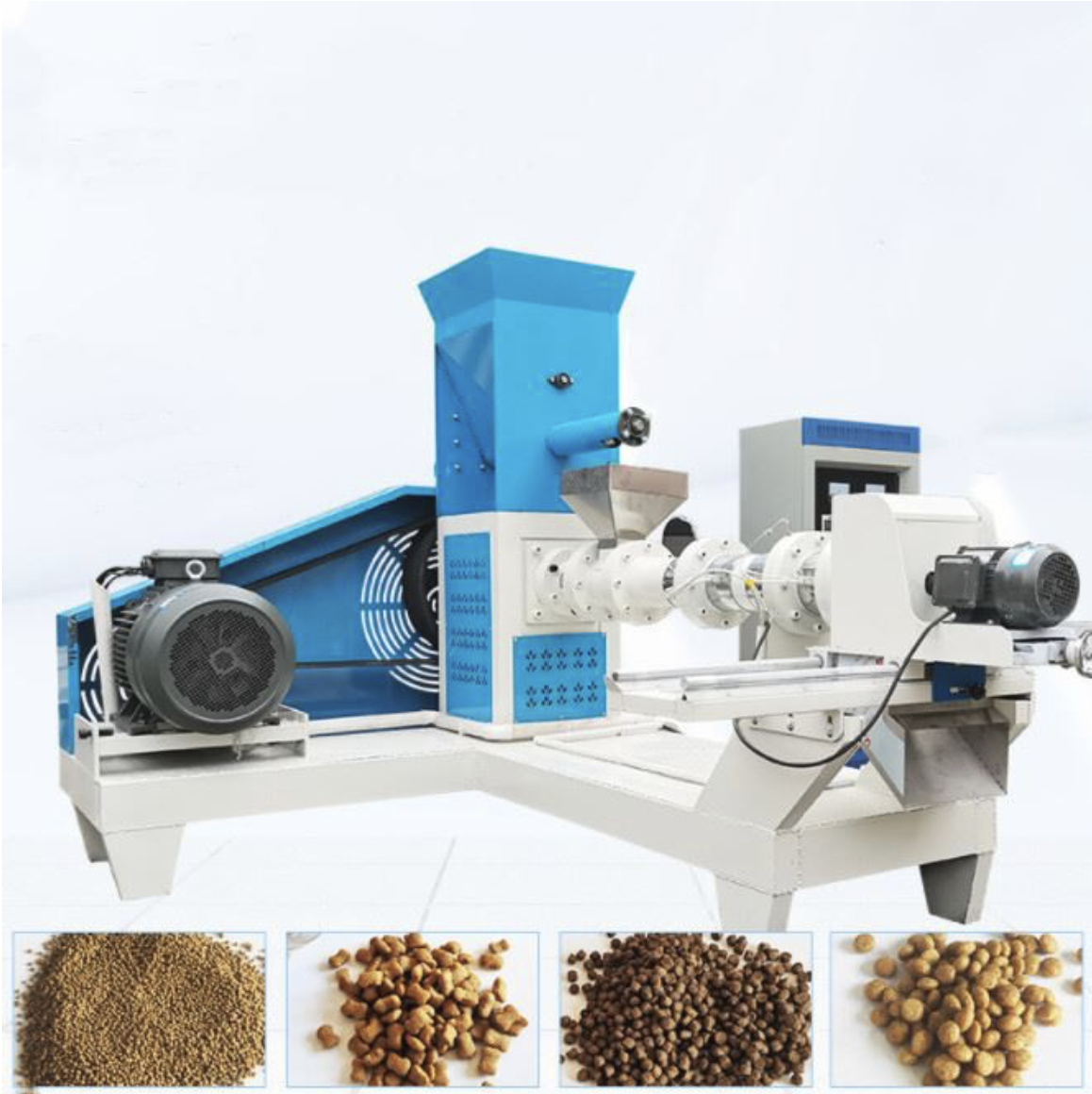
beef cattle industry
Forage-Based
- Use as much of grasslands and pastures as possible to reduce cost of management
- Use significant grain in finishing programs (for energy intake before they go to market → increase in $ of carcass)
Utilizes land not capable of crop production
- environmentally aware
Adds value to forages and grains raised on crop-land
- Raise a product that humans can eat from land that isn’t viable for plants
Great diversity of cattle and farms/ranches
- Environment: great diversity of land, industry will look different based on location
- Prairies: very dry, low stocking density
- Eastern: lots of rainfall, more pastures, bigger cattle
Industry is based on tradition
- Consumers like the natural, historic image; increases exports
- Reluctance to change and adapt new technology
free enterprise basis
The market structure that the Canadian beef industry operates under: No quota system, free to raise as much cattle as they want, free to market as much as they want!
No supply management or price setting → riskier! Especially for market prices!
Highly susceptible to world market conditions:
- Large fluctuations in prices (can have high highs and very low lows - lots of exits from the business at lows)
- Supply and demand (e.g. global shortage of animals = increase in price due to shortage of supply; think of droughts in the West)
beef industry trade
Free trade among Canada, the United States, and Mexico.
Industry relies heavily on trade! Canada is a major exporter (policy team in Ottawa that advocates for free trade and reduces trade barriers to increase beef exports globally).
Trade with other countries is subject to tariffs and quotas. We have trade missions to convince other governments to reduce tariffs and increase quota to maximize exports.
Commodity beef is traded on the futures market (people will speculate on beef prices). Beef future trades with other agriculture commodities on Chicago Board of Trade. Some producers use this to try and deal with ebbs and flows in the industry (but it is volatile).
Value needs to travel up the supply chain. BIG CHALLEvNGE FOR THE INDUSTRY! The beef industry is not as vertically integrated, thus, the value at each level must be regulated; value must be captured at each level to gain a profit from buying from the last step.
vertical integration
System in which every level must capture value and must go down even to the consumer.
Cow-calf → Feedlot → Packing Plant → Wholesale → Retail.
The beef industry has very little of this.
Currently: more producers are taking their product straight to market to capture all the supply chain themselves and get more value.
seedstock
The first step in the movement of beef cattle in the industry. “Breed the best to the best”!
Goal: to produce genetics for the commercial industry → making “genetically elite” animals; raising bulls and replacement heifers.
Bull sales typically in spring to cow-calf producers, pregnant heifer sales typically in fall
Market their “value” - sold for genetic value rather than body weight!
Culls go to beef industry → not all offspring are “elite”, those who don’t “make the cut” are culled (old cows and bulls, steers, heifers that usually not-pregnant).
Purebred → usually raising and marketing a specific breed! ~11,000 purebred breeders in CA → Angus, Simmental, Hereford, Charolais; ~26 recognized breeds under CFIA.
Breed organizations → keep pedigree/parentage records, conduct performance evaluations (who’s the best bull?).
Composite breeds → use cross-breeding to produce high genetic value animals; breeding complementary traits (get a hybrid of “good traits”).
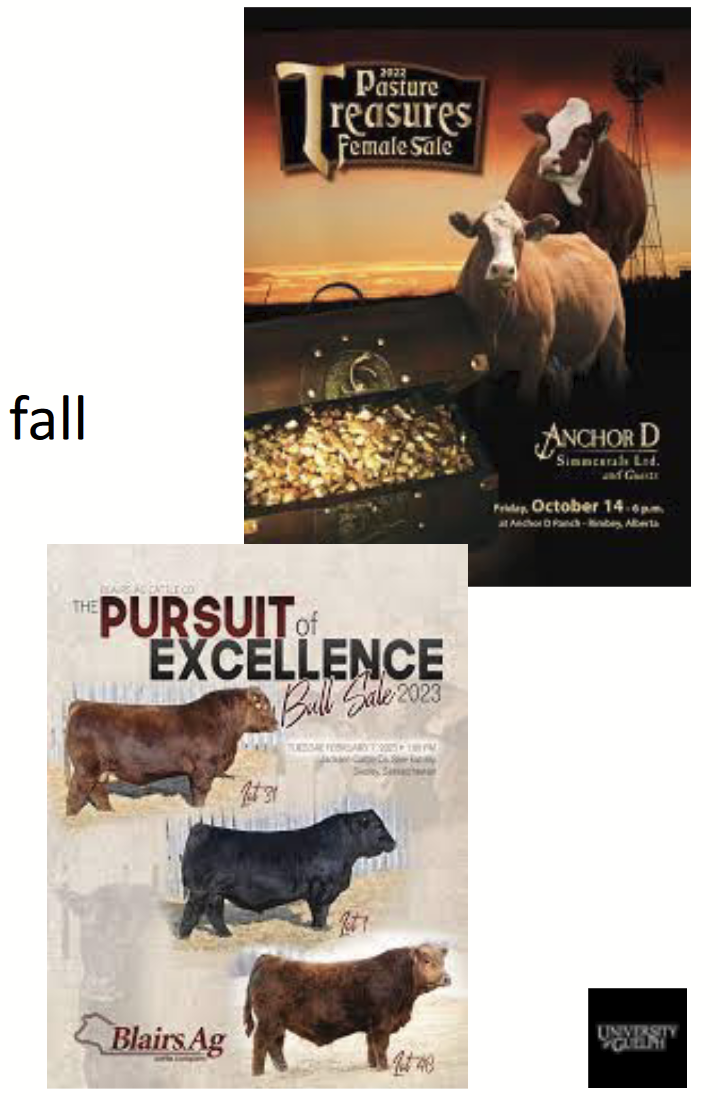
cow-calf production
The second step in the movement of beef cattle in the industry. Genetics obtained from seedstock are sold.
Goal: one healthy calf from each cow every year! → cows typically calve in late winter/early spring (when grass/pasture is available) and wean calves in the fall (high supply and low demand at this time) → wean calves at 500-600 lbs (~6 months) → some producers will choose to calve in fall due to short supply and high demand (but harder to feed).
Largest number of producers → note: may also be part of other parts of industry (e.g. seedstock or backgrounder).
Typically on lower quality land → can grow forage or pasture but not grain.
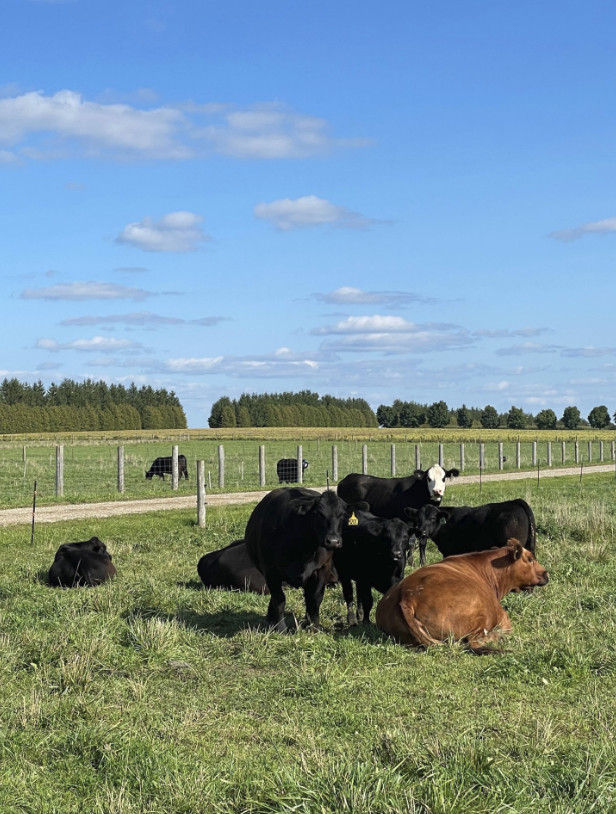
backgrounding
The third step in the movement of beef cattle in the industry. “Holding pattern”.
Goals: increase the size of lightweight calves before entering the feedlot; manage supply of calves entering the feedlot → might not be enough space in feedlots so they must be held somewhere, also allows producers to spread out calves in the marketplace.
Ranges from 3 to 6+ months in this step.
Low cost of gain → want increased size and low cost of feed → grass/pasture with some grain supplement is ideal; can be dry lot or yard (especially if winter).
Cows can range from 1 year to 14 months of age and are raised as low-cost as possible, then sold to feedlot!
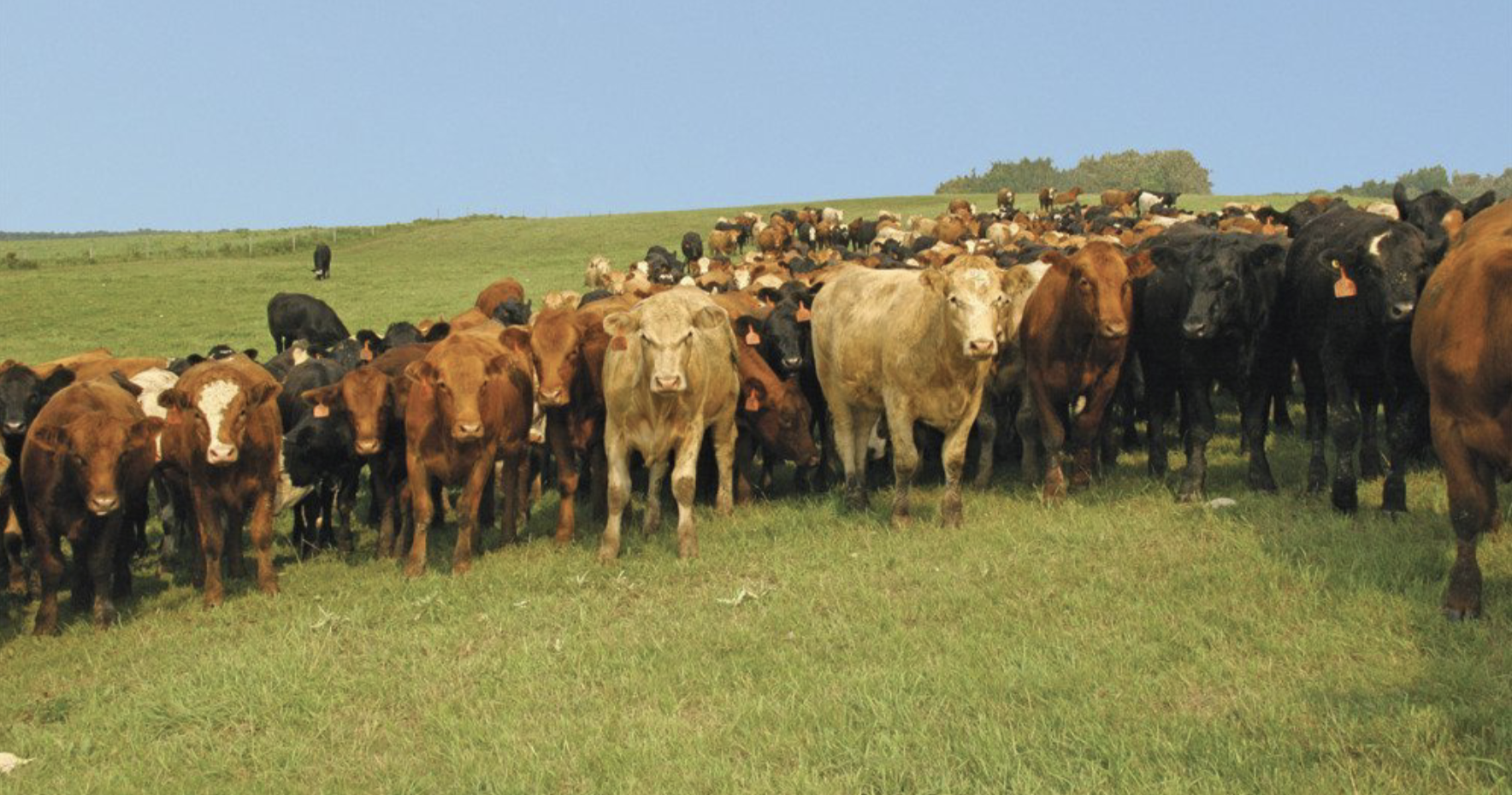
feedlot
The fourth step in the movement of beef cattle in the industry.
Goals: rapidly gain weight (target >2kg/d); add lean mass (protein/muscle) followed by fat cover (for more juiciness).
Market after 3-6 months → target of ~1600 lbs market weight (increases year after year). Steers or heifers used (if not planned on being used for beef, can be replacement heifers).
Calf-fed: enters feedlot directly, 200 days to finish (sold directly from cow-calf producer after weaning, so must spend more time and gain more weight to finish).
Long-yearling: large frame (as they had more time to grow), less than 3 months to finish, previously backgrounded for a long time.
Short-Yearling: medium frame, 3-5 months to finish, may have been previously backgrounded (for a shorter time).
Western CA (right): larger lots in size, 20K+ animals, wind drapes for shelter.
Eastern CA (left): smaller lots due to weather, want to shelter cattle together.
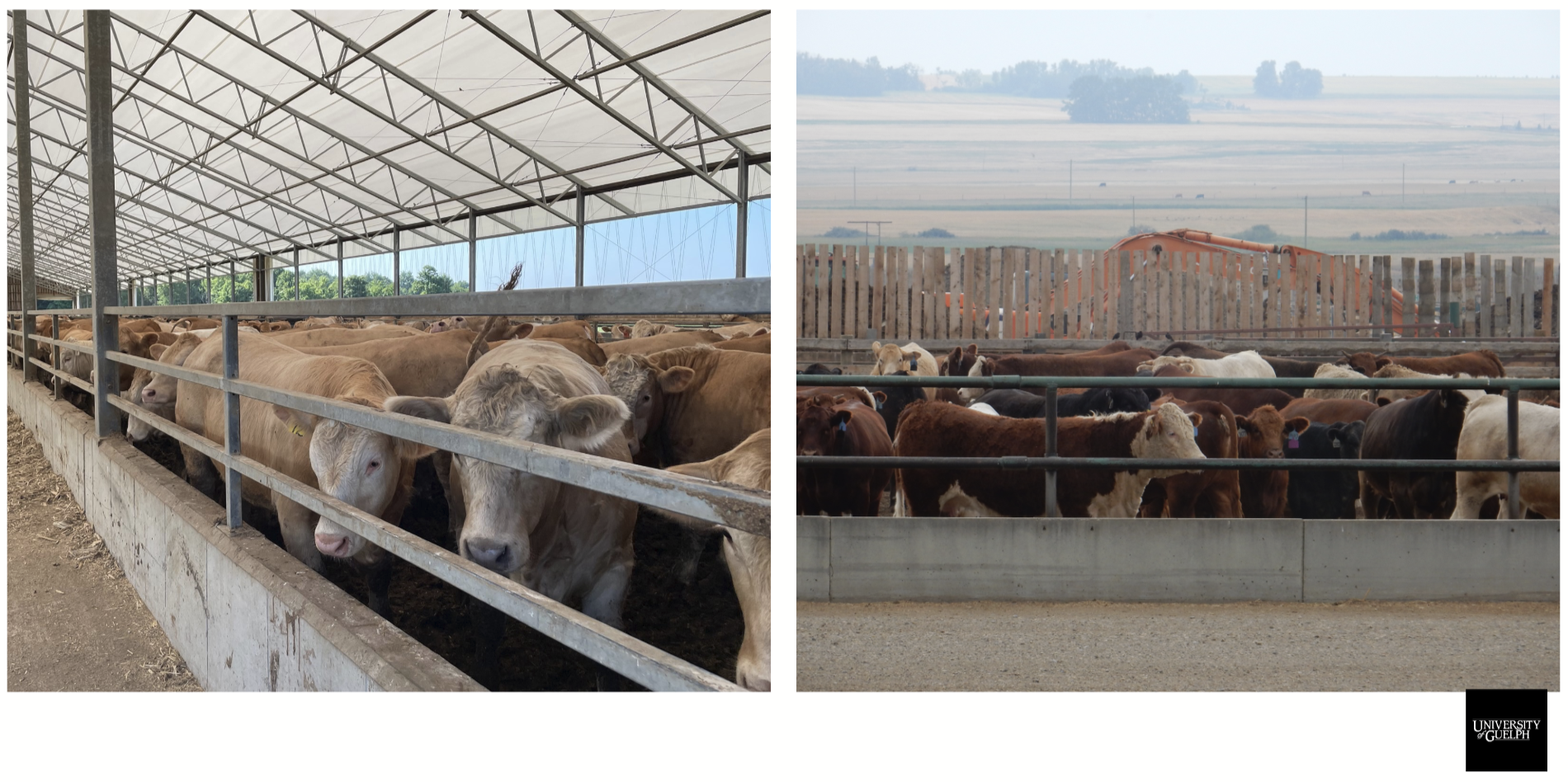
calf-fed
Enters feedlot directly, 200 days to finish.
Sold directly from cow-calf producer after weaning, so must spend more time and gain more weight to finish.
long-yearling
Large frame (as they had more time to grow), less than 3 months to finish, previously backgrounded for a long time.
short-yearling
Medium frame, 3-5 months to finish, may have been previously backgrounded for a shorter time.
beef processing
The fifth and final step in the movement of beef cattle in the industry.
Sent to abattoirs for slaughter.
Only 22 federally inspected processing plants in Canada (require federal inspection to be sold out of province) → “The Big 3” process 85% of Canadian Cattle (1 in Guelph, 2 in Alberta). In Guelph, around 400,000 hd/yr.
Many more small provincial plants → ~90 in Ontario; smaller scale, average around 12 cattle/day.
PROBLEM: not enough abattoirs.
beef processing issues
VERY labour intensive → many people in a small space; variation in carcass size and shape make mechanization very difficult!
Plant closures → BIG BACKLOGS due to 55K cattle processed per day → what to do with them? → drop in price as supply overtakes demand. Need for supply management?
Restaurant shut-downs → decreased demands, shift to retail.
Canadian beef industry
11.3 million cattle → 1.41 dairy, 3.56 beef, 3.3 feedlot.
Beef cows: majority in Alberta (29%), 6% in ON.
CBBC recognizes 26 beef breeds in Canada but >1000 globally.
Canada has 1.2% of the world’s 942 million cattle and produces ~2% of world supply of beef. Canada exported 49% of all beef produced in CA in 2022, valued at ~$4.7 billion. Canada still imports lots of beef as our plants don’t make enough domestically. Generally: export > import.
60,697 beef producers in Canada. Average farm size is 69 cows; highly variable across the country.
61% of farms have less than 47 cows (16% of the herd).
ECONOMY: $10.2 billion in cash receipts. Contributing $22 billion to Canadian GDP.
TREND: decrease in number of farms, increase in number of cattle on farms, decrease in number of producers.
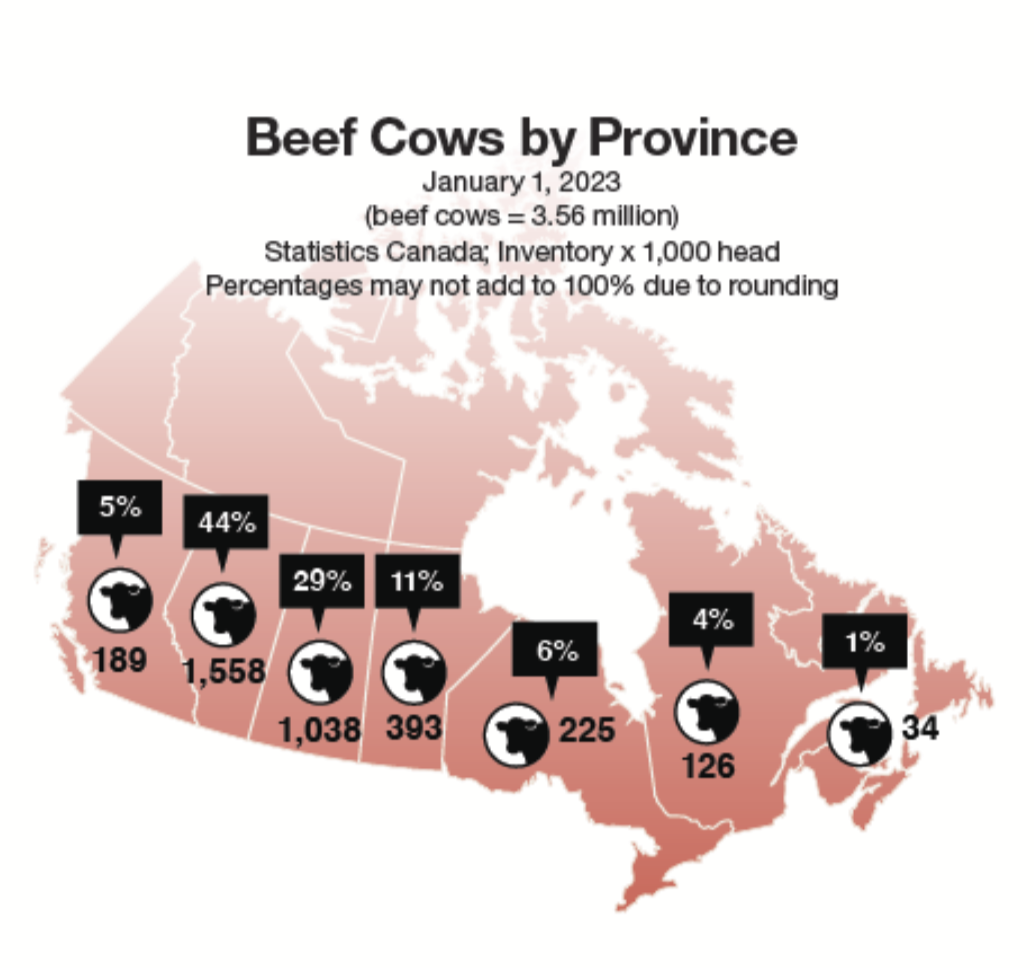
British breeds
Early maturing (puberty at lower body weight), deposit fat early, generally known for marbling.
e.g. Angus, Hereford.
Continental/Exotic breeds
Later maturing (at higher body weight), rapid growth rate, lean growth (known for muscle).
e.g. Simmental and Charolais
Angus
Originated in the British Isles (British type). Most popular beef cattle breed in Canada!
Black and red coats (red is recessive). Usually always polled (no horns).
Known for carcass traits → high marbling!
Also known for maternal traits: good mothers.
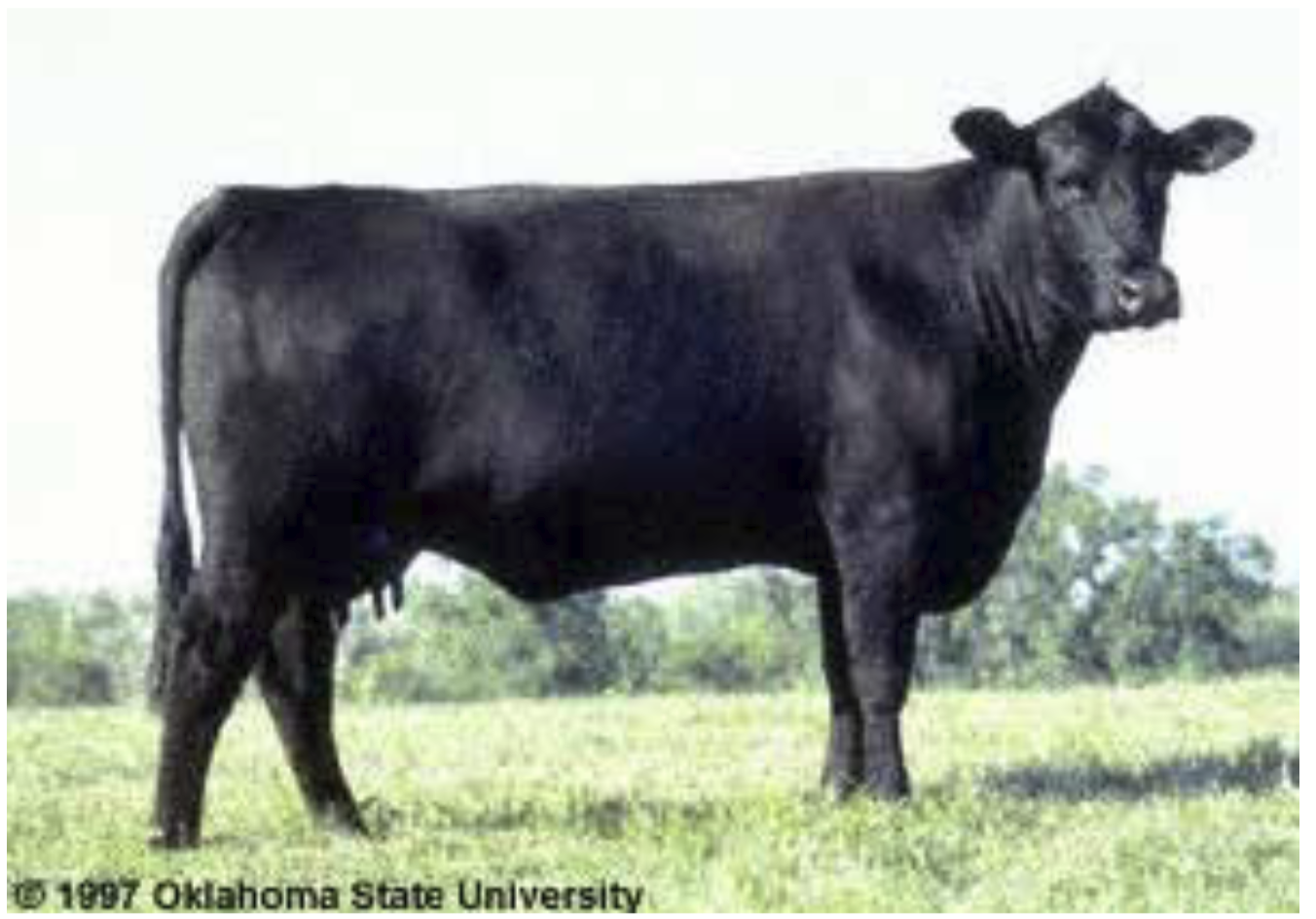
Hereford
British origin (British type) beef cattle.
Deep cherry red with white face and underbelly. Has a horned variety and a polled variety.
Very hearty! Do well in tougher environments.
Smaller body size, less milk production.
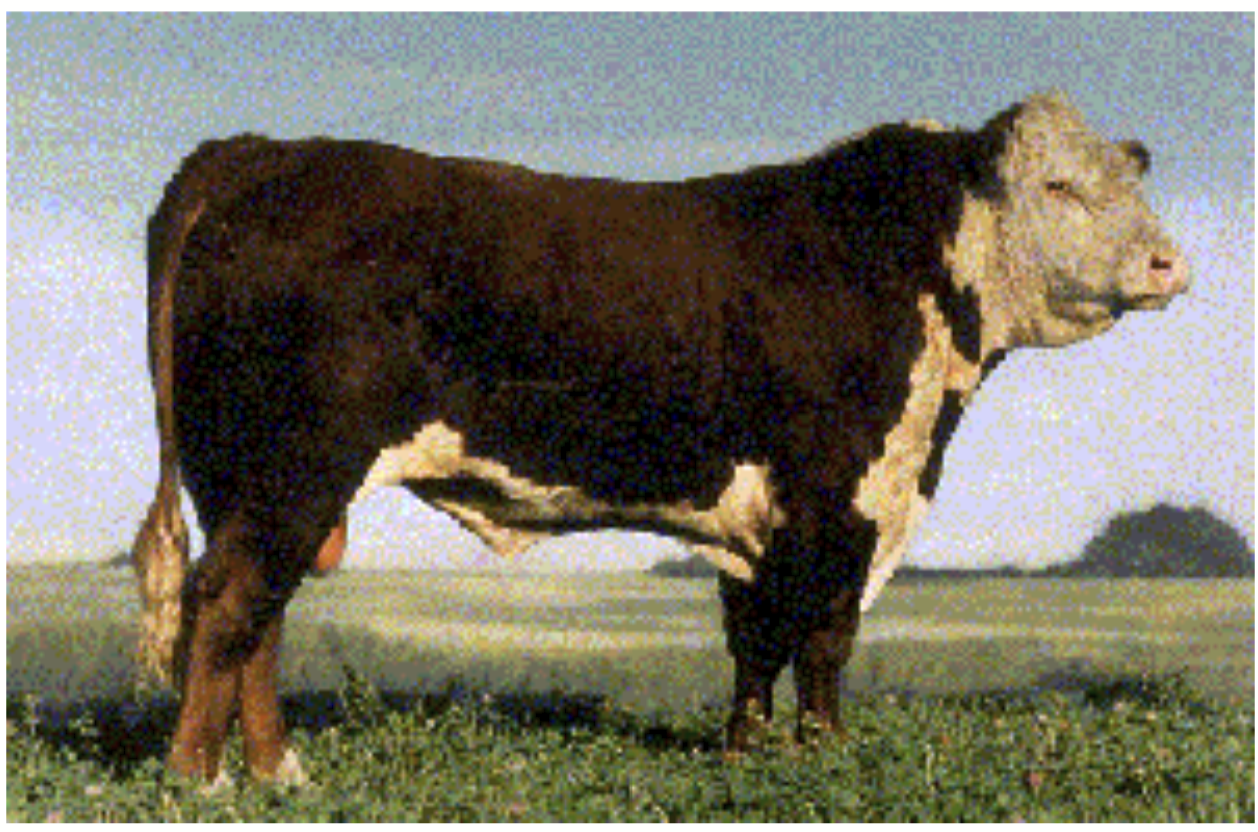
Simmental
Continental breed → origins in Switzerland, France, and Germany.
Red (traditional) coat or red spotted. Black coats possible as well, in which case can qualify for Certified Angus Beef Program.
Known for maternal traits: often milked in Europe due to high fat and protein components.
Fast growth rate! Most popular breed globally!
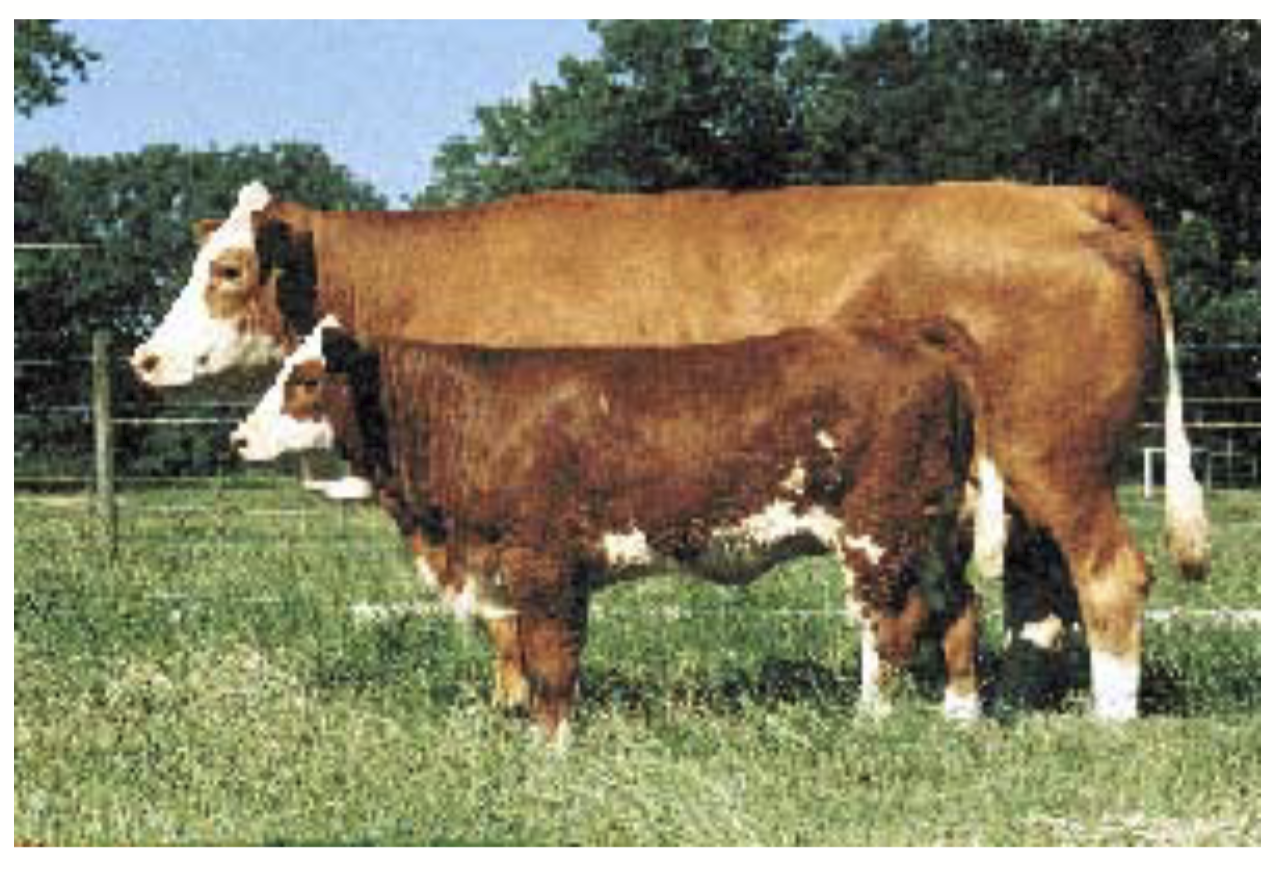
Charolais
Continental breed → French origin, imported to CA in the 60s.
Typically solid white, sometimes buff, sometimes red.
Growth champions: extremely quick growth rate and put on lots of muscle. Slow maturing. Make good crosses with Simmentals!

Bos taurus
Non-humped cattle.
British, Continental, Dual Purpose, Dairy, etc.
Easier fleshing, more tender beef.
Bos indicus (zebu)
Humped cattle. Tropical origin. Heat tolerant, genetic resistance to ticks. More popular is the Southern USA.
Light/white hide to reflect sun, dark eyes and noses for UV resistance.
e.g. Brahman, Nellore (popular in Brazil)
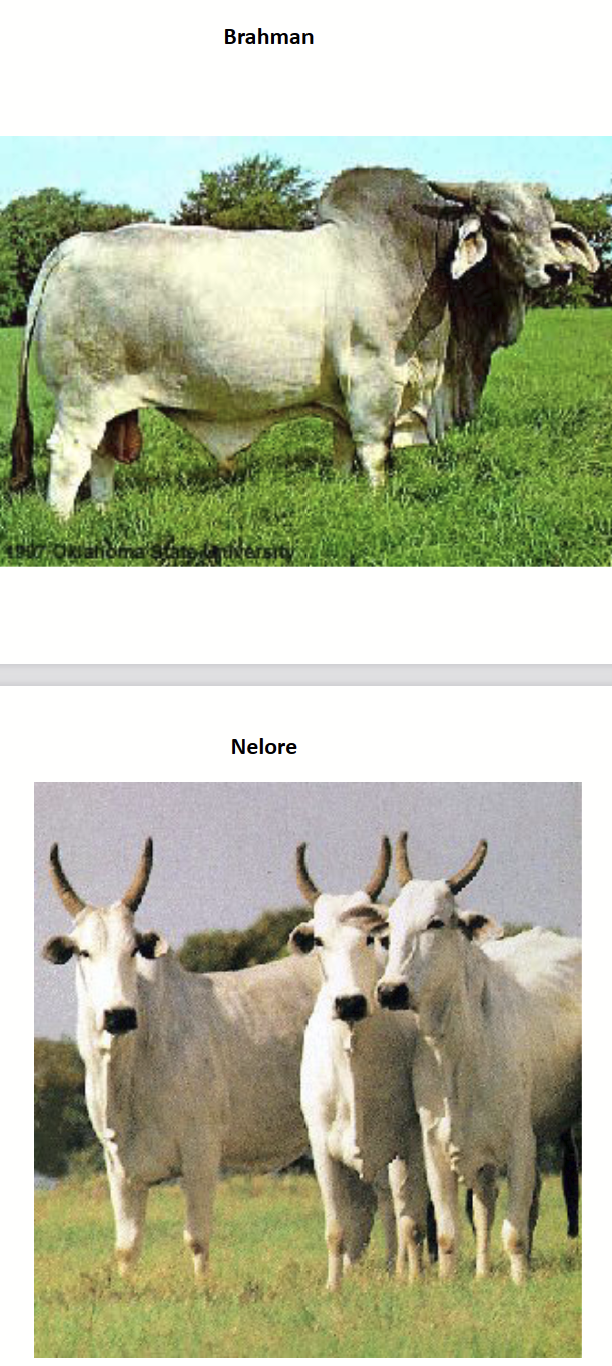
cattle in the 1950s
Time when beef industry was dominated by British breeds (Angus, Hereford).
1953: Angus imported onto Guelph campus.
1860s: Hereford imported to Guelph.
Small frame score: pretty short and round cattle.
Slower growing.
1950/60s: Enter the “exotics”! Fast-growing Continental breeds imported into Canada (e.g. Simmental, Charolais, many were crossbred with Angus and Hereford).
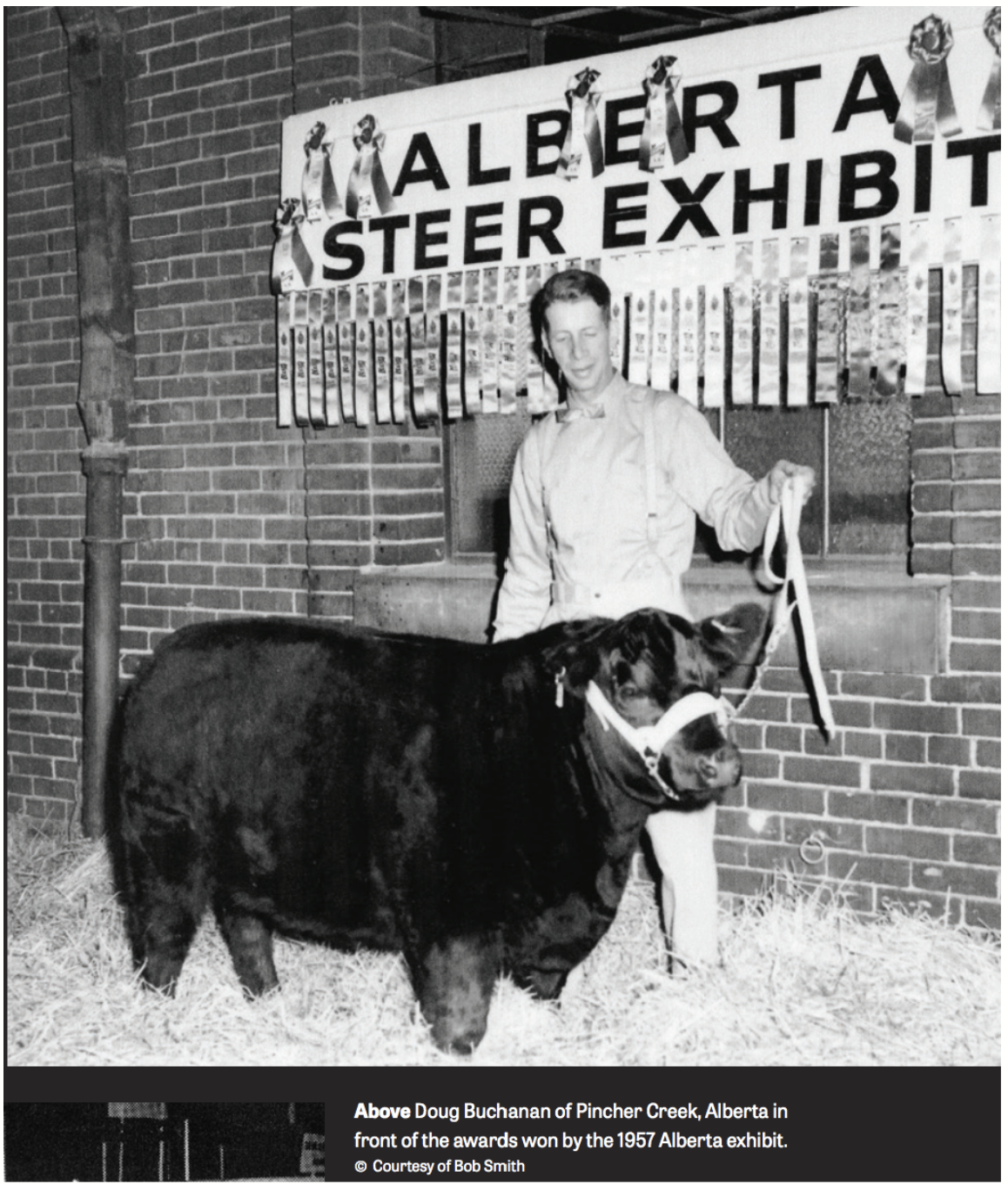
polled cattle
Genetically do not grow horns. Done to protect cattle in feedlot (reduce tussles, etc,).
In beef, dehorning is becoming less and less common because genetics are skewing towards non-horned animals.
- e.g. dominant trait in Angus.
About 80% of beef producers in North America use these genetics.
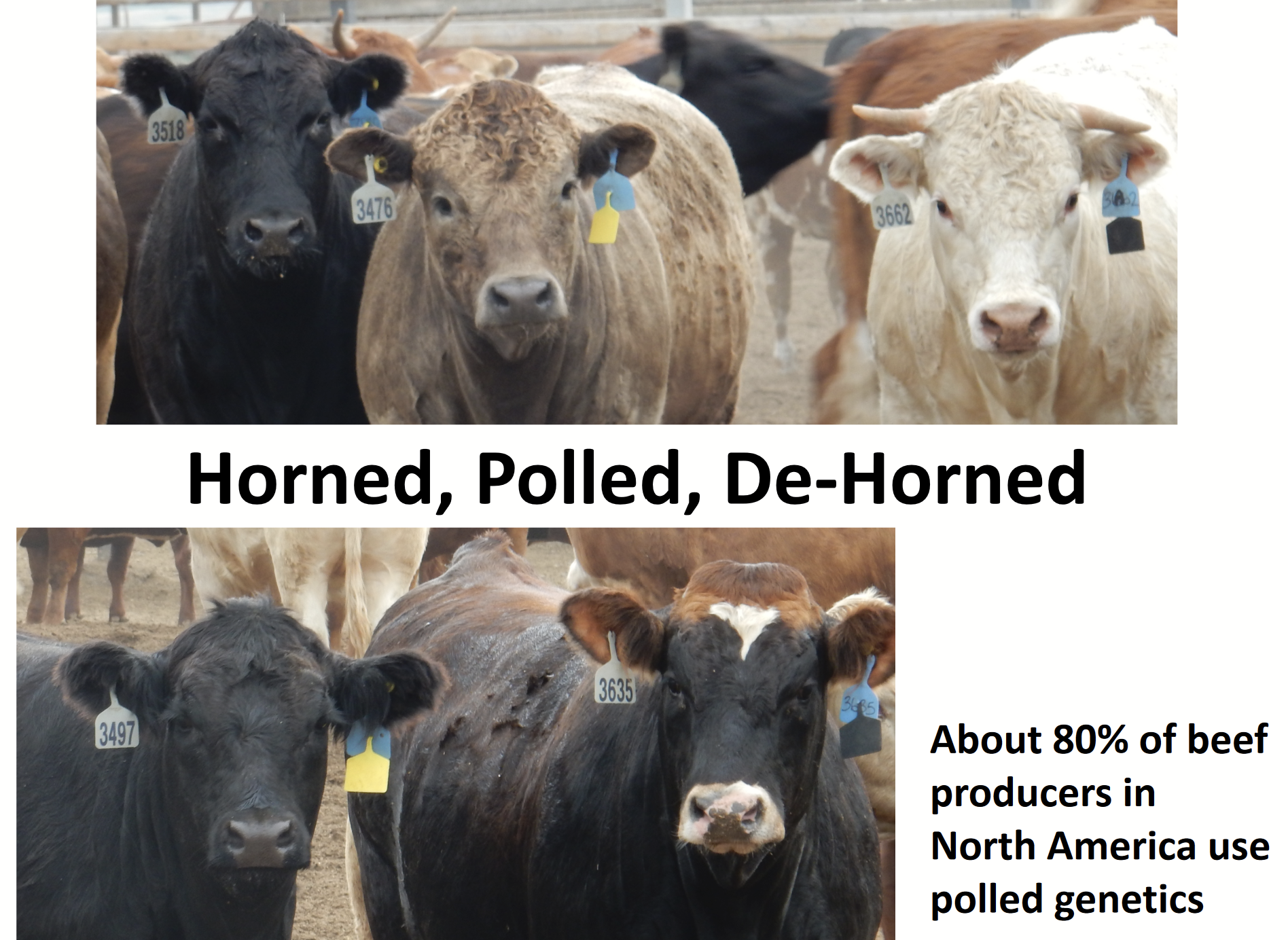
cross-breeding
Combine genetic traits of two (or more) breeds or lines/types. Very common in commercial beef production (much more so than in the dairy industry)!
Why is it done?
1. Align complementary traits
2. Benefit from hybrid vigor (heterosis; improved or increased functionality from crosses)
Big impact on the industry! “The only thing that is free in the cattle business” - S. Miller.
hybrid vigor (heterosis)
Increased productivity and longevity in traits due to hybridization.
2-way cross
Breed A x Breed T → straightbred → hybrid vigour → market all calves
